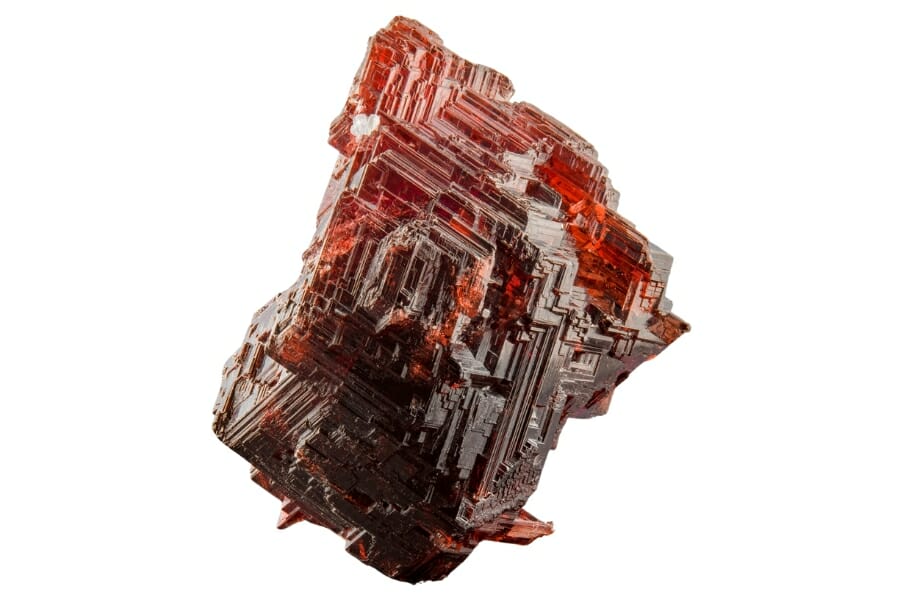Get ready to embark on a sparkling journey beneath New York’s surface, where a mesmerizing array of rocks, minerals, and gems awaits your curious eyes. This state is a true gem, boasting an extraordinary variety of geological treasures that will leave you in awe.
From the towering skyscrapers of Manhattan to the serene shores of Long Island, the Empire State boasts a jaw-dropping variety of geological wonders that will blow your mind.
As we delve into this fascinating realm, we’ll uncover the stories behind these geological marvels. So, whether you’re an aspiring geologist or someone who’s always been interested in the beauty of the Earth, you’re in for a treat!
Let’s explore the world of rocks, minerals, and gems and discover the hidden treasures beneath our feet!
A List of The Common Rocks, Stones, and Minerals Found in New York
If you want to see our state’s natural wonders, check out our helpful and insightful guides that can come be useful to you:
The New York State Rock, Mineral, and Gem
Let’s start by looking at the rocks and minerals that symbolize our state:
| New York State Mineral | Herkimer Diamond |
| New York State Gem | Garnet |
To learn more about the rules of collecting rocks and minerals in the state, visit New York State Department of Environmental Conservation (DEC). This will help you know the sustainable practices during your journey.
Always Confirm Access and Collection Rules!
Before heading out to any of the locations on our list you need to confirm access requirements and collection rules for both public and private locations directly with the location. We haven’t personally verified every location and the access requirements and collection rules often change without notice.
Many of the locations we mention will not allow collecting but are still great places for those who love to find beautiful rocks and minerals in the wild without keeping them. We also can’t guarantee you will find anything in these locations since they are constantly changing.
Always get updated information directly from the source ahead of time to ensure responsible rockhounding. If you want even more current options it’s always a good idea to contact local rock and mineral clubs and groups
Albite
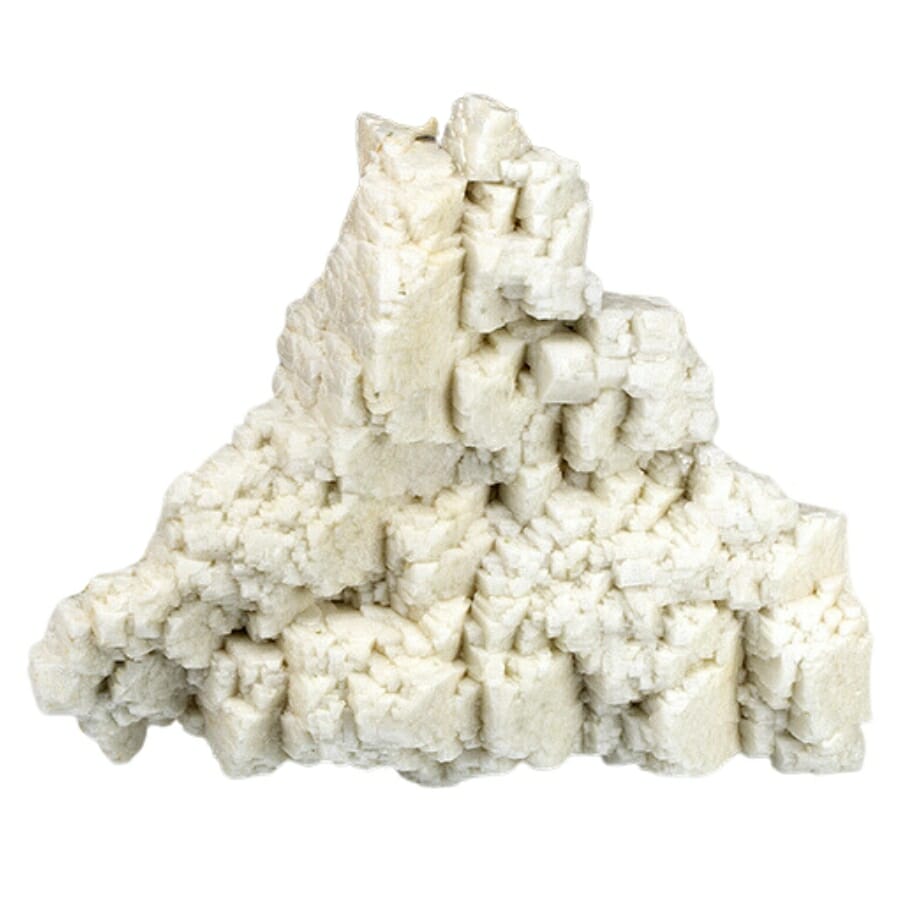
Comprising part of the feldspar family, albite is renowned for its striking milky-white appearance that captures the essence of moonlight. This mineral, formed from a fascinating dance of elements, is a crucial ingredient in igneous rocks like granite and pegmatite.
Albite’s story begins deep within the Earth’s crust, where molten magma cools and solidifies. As the magma undergoes this transformation, its crystals form alongside other minerals, creating the intricate patterns seen in many rocks.
What’s intriguing is how its composition, primarily consisting of sodium, aluminum, and silicon, contributes to its alluring pearly luster. This effect is noticeable when light dances across its surface, evoking a sense of otherworldly elegance.
Its ability to lower the melting point of ceramic materials makes it an invaluable addition to porcelain and glass production. This property, coupled with its resilience against weathering, also makes albite a key component in creating building materials that can withstand the test of time.
Its role extends to science, where researchers use albite’s distinct optical properties to understand the behavior of light within crystals better.
Its delicate beauty and function in shaping the Earth’s crust highlight the intricate interconnectedness of our planet’s geology.
Whether it’s the shimmering elegance it adds to geological formations or the practical contributions it makes to the industry, albite stands as a shimmering testament to the wonders hidden beneath the surface of our planet.
Where you can find Albite in New York
It’s easy to find albite in New York, especially in these places:
- Balmat-Edwards Zinc Deposit
- Crystal Grove Diamond Mine and Campground
- Lake Harris
Bronzite
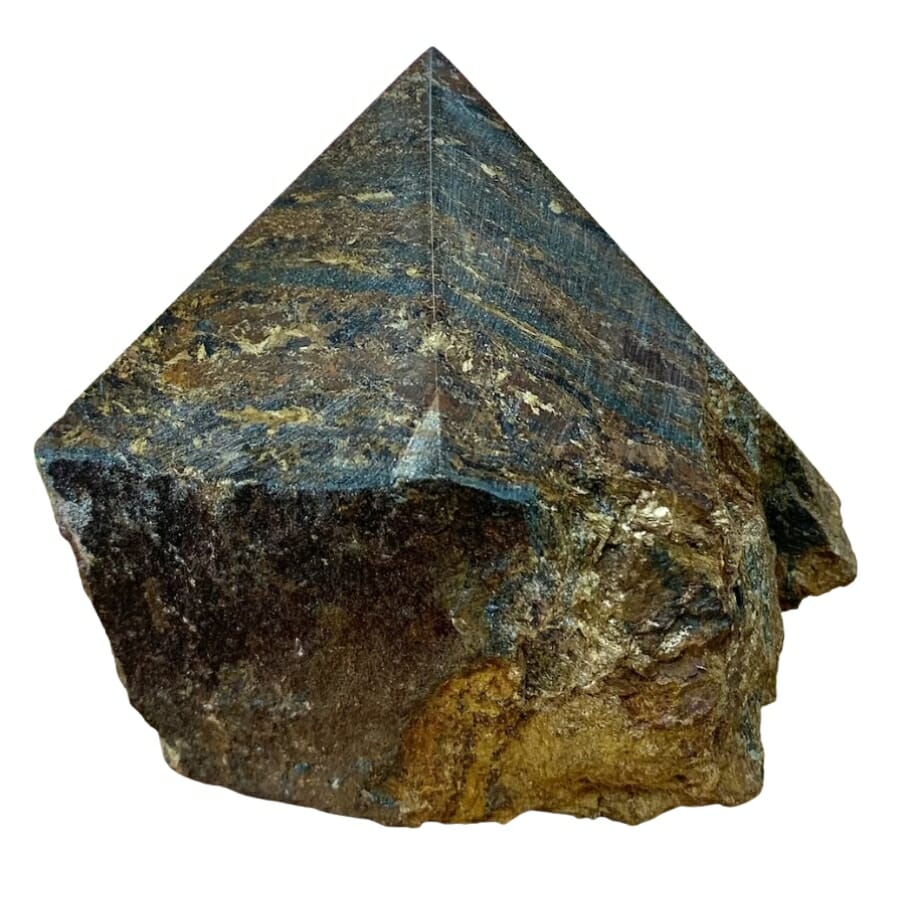
Bronzite is a mineral that bridges the gap between the rugged and the refined. It boasts a distinctive appearance reminiscent of antique bronze.
Part of the pyroxene group, its name pays homage to its stunning metallic luster and deep brown hue. This mineral’s journey from molten beginnings to the heart of Earth’s rocky landscapes paints a vivid picture of geological artistry.
Born within the depths of magmatic activity, bronzite forms as part of igneous and metamorphic rocks. It develops when molten rock, or magma, cools and crystallizes, giving birth to the rich, brown crystals we now associate with the mineral.
What truly sets this mineral apart is its intricate pattern of shimmering flakes, known as “schiller” or “aventurescence,” which gleam and reflect light like sunlight dancing on the water’s surface.
It also finds its way into various practical applications. Its durability and resilience against weathering make it ideal for ornamental and architectural purposes. Countertops, tiles, and decorative objects crafted from bronzite showcase their beauty and ability to withstand the test of time.
Moreover, its unique appearance has led to its incorporation in jewelry designs, allowing individuals to carry a piece of Earth’s geological artistry.
Whether gracing our surroundings as a striking interior adornment or worn as a cherished accessory, bronzite’s appeal connects us to the core of our planet’s geological history.
Where you can find Bronzite in New York
Bronzite deposits can be found around the area of Tilly Foster Mine.
Clinochlore
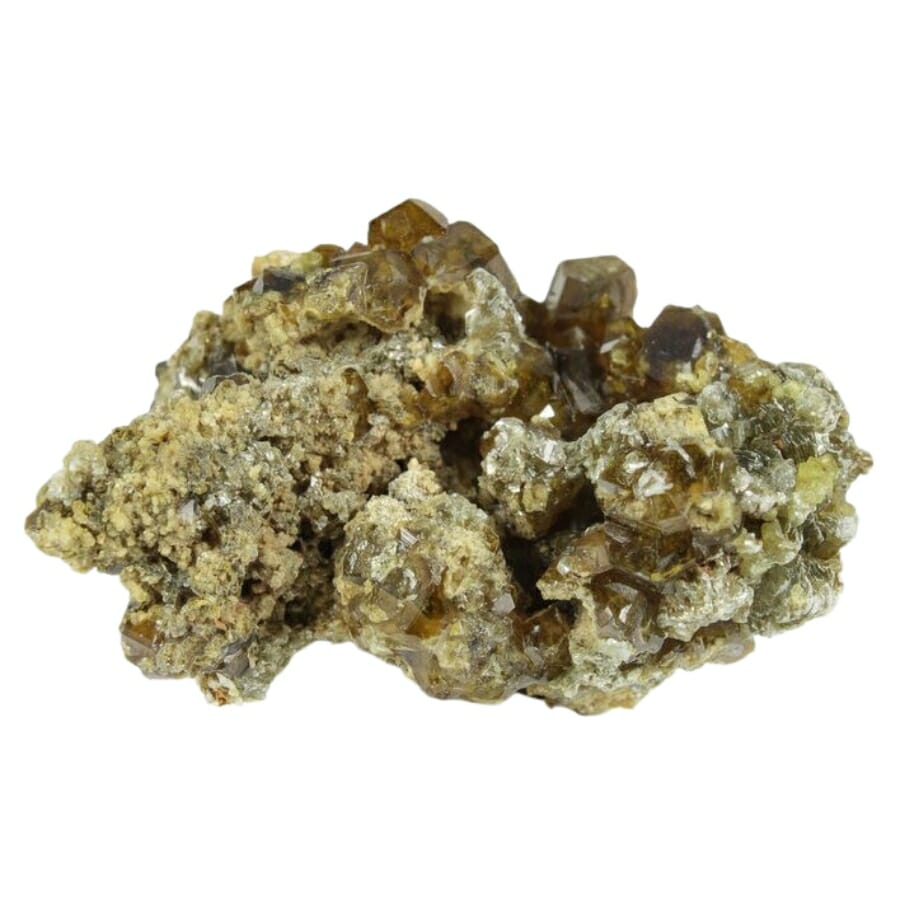
Clinochlore has delicate shades of green and innate tranquility. Found in various geological settings, clinochlore’s name stems from the Greek words “klinein,” meaning to incline, and “chloros,” referring to its lush green color.
This mineral’s formation and versatile attributes tell a tale of nature’s artistic ingenuity. Born from the metamorphosis of rocks, clinochlore emerges as a product of the alteration of pre-existing minerals under conditions of heat and pressure.
Its formation often occurs in regions undergoing dynamic geological processes, such as mountain-building events or tectonic plate collisions. This transformation creates the serene, green crystals that make clinochlore so appealing.
Clinochlore serves as an essential player in various industrial and artistic endeavors. Its soft, green hue has made it a favored choice in creating pigments used in ceramics and paints.
Its malleability and ability to retain shape under heat have also led to its incorporation in pottery and sculptures. Additionally, its use as a mineral supplement in the agricultural sector highlights its role in nourishing plants and promoting healthy growth.
This blending of natural beauty and versatility filled clinochlore with a unique sense of value in geology and the hearts of those who appreciate its serene charm.
Where you can find Clinochlore in New York
You can discover clinochlore deposits at the Tilly Foster Mine.
Magnesite
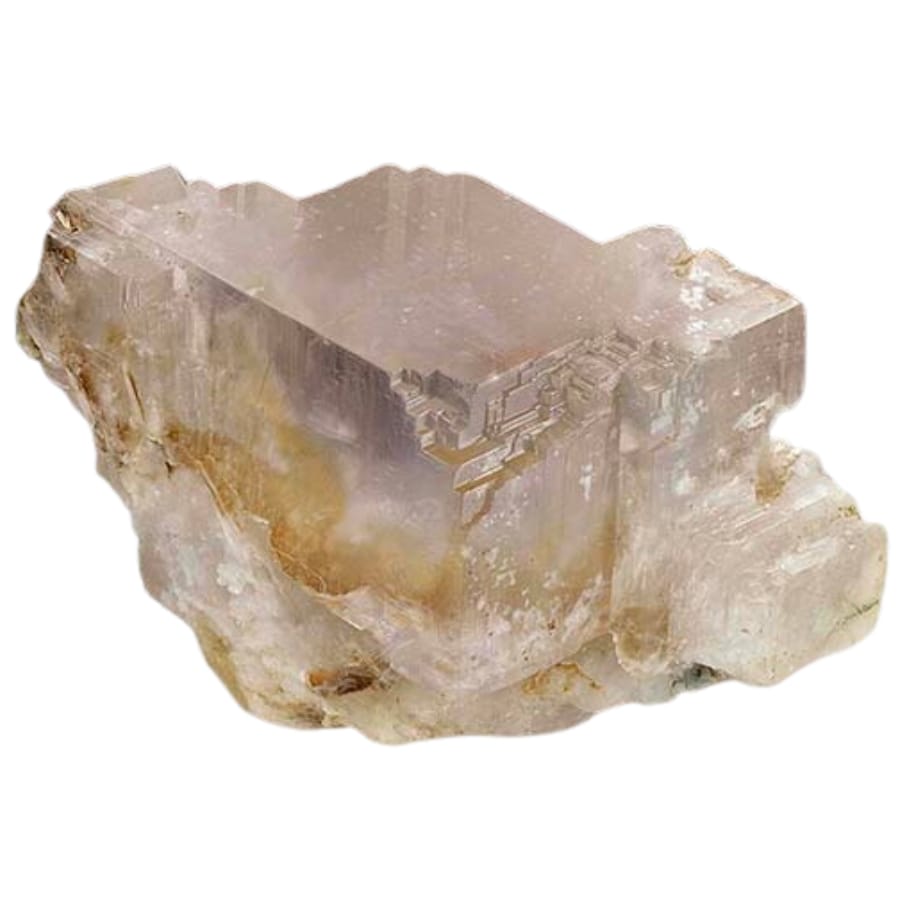
Magnesite, an enchanting mineral with a subtle charm, holds a special place in geology. Composed mainly of magnesium carbonate, this mineral’s formation is a testament to the intricate processes that shape our planet.
It originates from altering magnesium-rich rocks, a transformation driven by geological forces and chemical reactions. When magnesium-rich stones, such as serpentine or dolomite, undergo metamorphism, they give rise to the creation of magnesite.
This fascinating process involves a delicate interplay of temperature, pressure, and chemical changes deep within the Earth’s crust. Over time, these conditions encourage the reorganization of mineral components, forming the distinct white, gray, or beige magnesite crystals we see today.
One of its most significant uses is as a source of magnesium oxide, which has applications in industries such as steel production, refractories, and cement manufacturing.
In addition, magnesite’s texture and appearance make it a sought-after material for creating ornamental items, decorative stones, and intricate carvings. Its subtle elegance and unique qualities add a touch of natural beauty to architecture and art.
Where you can find Magnesite in New York
You can find magnesite at the Tilly Foster Mine.
Perthite
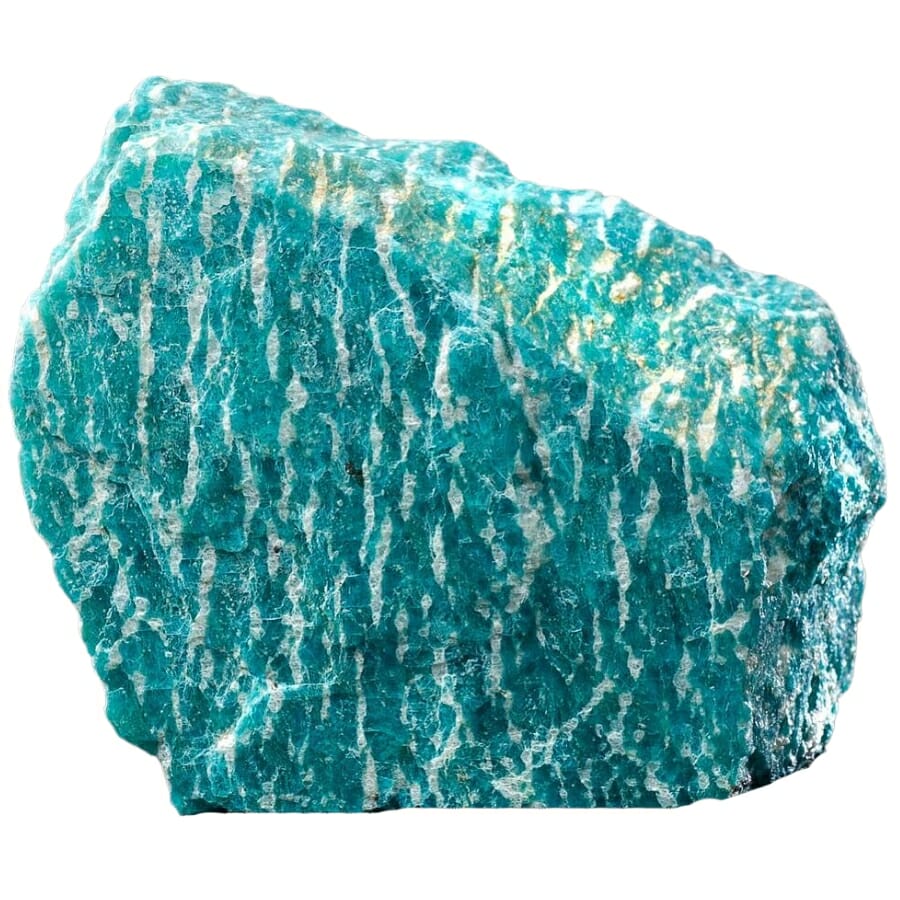
Perthite is an intergrowth of two distinct feldspar minerals, unveiling a mesmerizing tapestry of colors and textures that spark curiosity in geology. This unique phenomenon occurs when two types of feldspar, usually orthoclase and albite, weave together in intricate patterns.
The result is a mineral marvel that offers a glimpse into the complex processes that shape the Earth’s crust. Its formation begins as molten magma cools and crystallizes deep within the Earth.
During this process, feldspar minerals separate into individual crystals, each with its distinct composition. When conditions are just right, these crystals entwine in a harmonious dance, creating vibrant displays of perthite.
The interlocking nature of the two feldspar varieties produces striking contrasts in color and opacity, often resembling intricate patterns or delicate brushstrokes.
Although not often used for industrial purposes due to its relative rarity, perthite’s mesmerizing appearance makes it a sought-after collectible among mineral enthusiasts and lapidaries.
Additionally, the study of its formation sheds light on the complex processes that govern the movement and arrangement of minerals within rocks, providing insights into the Earth’s geological evolution.
Where you can find Perthite in New York
You can find perthite in the Lyon Mountains in New York.
Serpentine
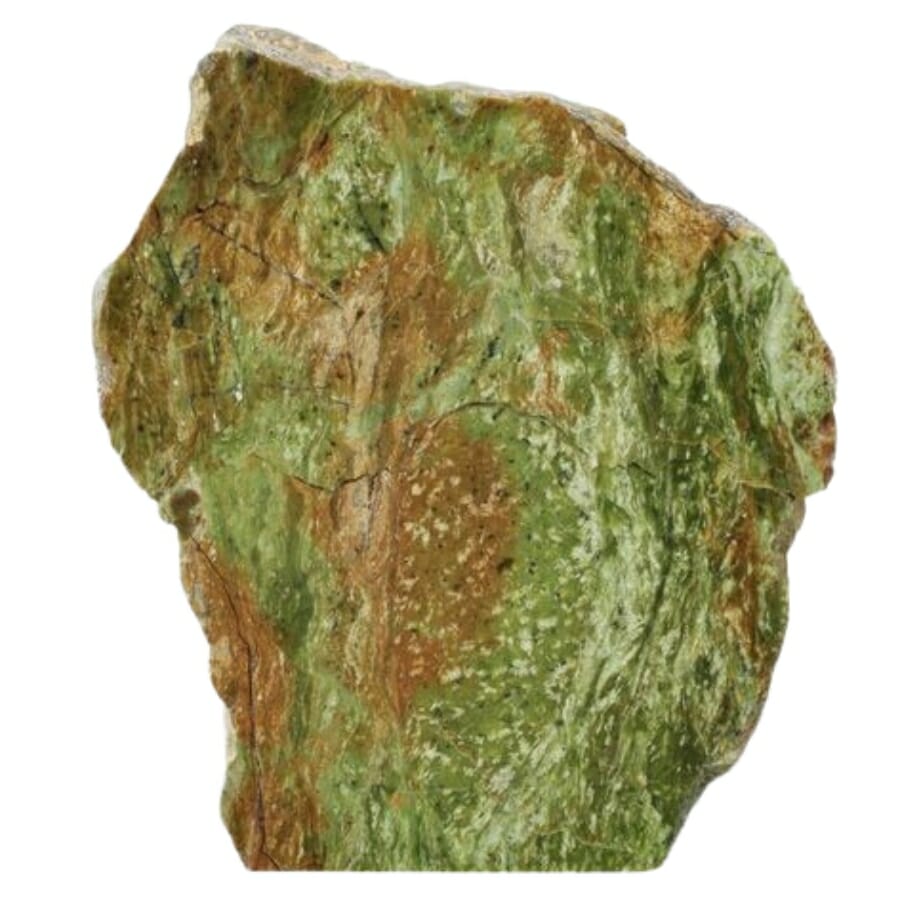
Composed mainly of magnesium, iron, and silica, serpentine owes its name to its subtle green color and resemblance to the skin of a serpent. This unique mineral results from altering pre-existing rocks, often igneous or ultramafic in origin, through serpentinization.
Serpentinization involves the interaction of water with minerals like olivine and pyroxene within the Earth’s mantle. This chemical reaction creates serpentine and other minerals.
This green-hued rock is found in various environments, from mountain ranges to oceanic plate boundaries. Its malleability has historically made it a valuable resource for carving and sculpting, while its minerals have been used in jewelry and ornamentation for centuries.
The unique properties of serpentine, including its resistance to weathering and ability to absorb and store water, have led to its use in creating stable and fertile soils for farming.
Whether admired for its aesthetic appeal, harnessed for its practical properties, or cherished for its cultural and geological significance, serpentine is a mineral that beautifully intertwines nature’s artistry with humanity’s endeavors.
Where you can find Serpentine in New York
Serpentine deposits can be found at the following locations in the state:
- Balmat-Edwards Zinc Deposit
- Buttermilk Falls at Keeseville in Clinton County
- High Rock Park
- At the southwest tip of Staten Island in the Androvette Clay Pits
- Outcrops of the Oswagatchie River
Tourmaline
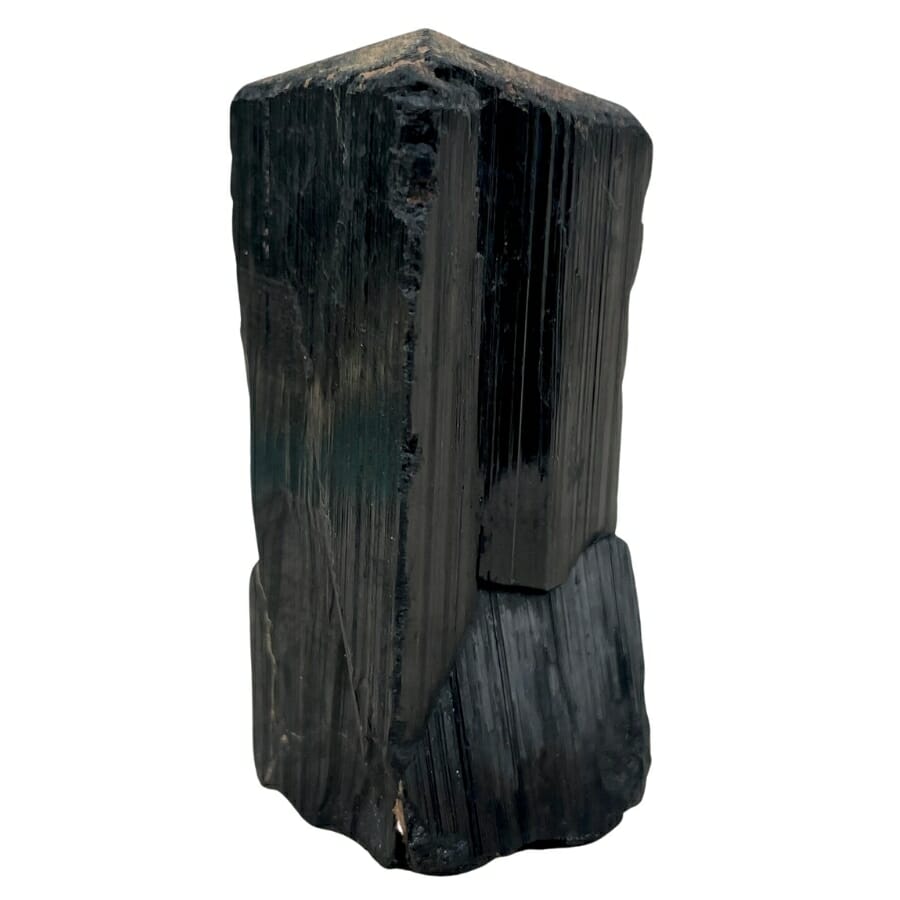
Tourmaline emerges from a geological symphony that spans a spectrum of colors. Composed of complex boron silicate compounds, tourmaline’s allure lies in its astonishing range of hues, from electric blues to fiery reds.
This mineral forms in various geological settings, often taking shape within pegmatites, which are exceptionally coarse-grained igneous rocks. Its formation is intricately linked to volcanic activity and the interplay of elements deep within the Earth’s crust.
As magma cools and crystallizes, it creates pockets of pegmatite rock that serve as a crucible for the birth of tourmaline crystals. What’s remarkable is that various trace elements, such as iron, manganese, and lithium, give each tourmaline specimen its unique color palette.
The mineral’s diversity is a visual feast, from the aptly named “watermelon tourmaline” with its green and pink layers to the striking “paraíba tourmaline” with its vivid blue-green hues.
Tourmaline’s ability to conduct heat is also a key component in thermoelectric devices. Additionally, this mineral’s varied colors and durability have secured its place in the world of gemstones and jewelry, where it has adorned crowns, rings, and necklaces for centuries.
From dazzling hues to technological prowess, tourmaline has enraptured science and art. Its complex formation and multifaceted uses exemplify the intricacies of the Earth’s processes, while its role in jewelry and technology underscores its cultural and economic significance.
Where you can find Tourmaline in New York
You can find tourmaline in New York, especially in these places:
- Brant Lake
- Crystal Grove Diamond Mine and Campground
- Mitchell Farm
- Oswegatchie River
Tremolite
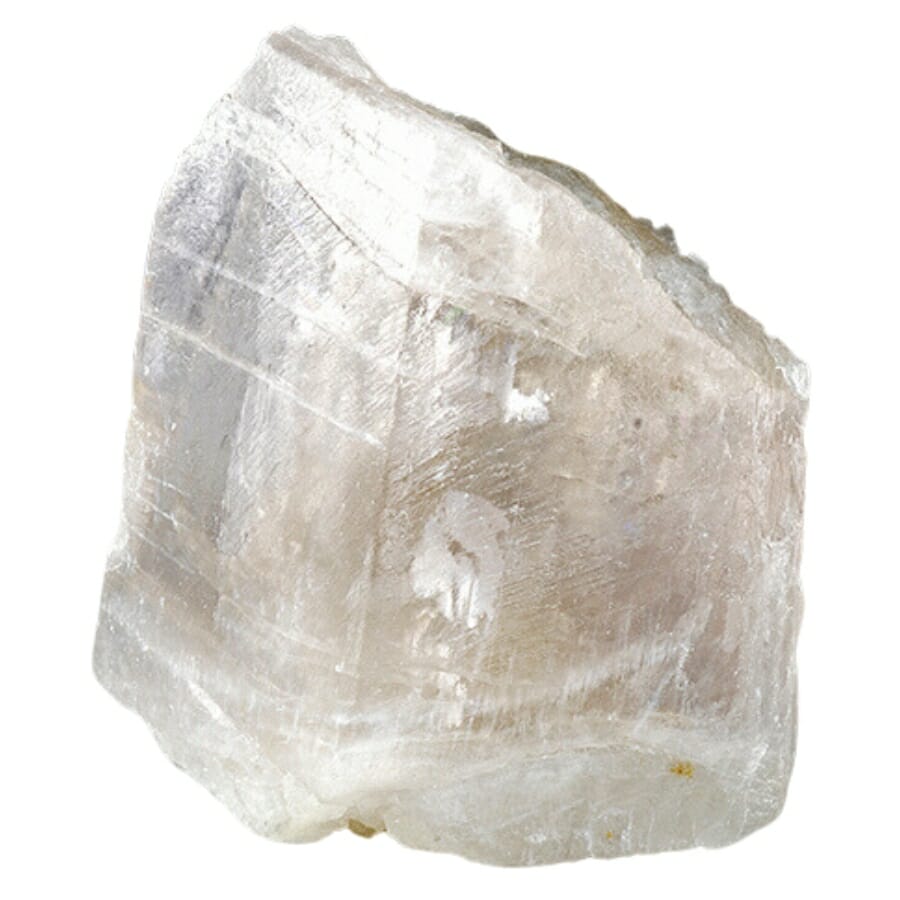
Comprising a silicate structure rich in calcium, magnesium, and iron, tremolite’s delicate, translucent appearance captures the imagination of geologists and collectors alike.
This mineral forms within the intricate dance of geological forces, often arising in rocks subjected to high temperatures and pressures. Its formation occurs during the metamorphic transformation of pre-existing rocks, such as limestone or dolomite.
Under the intense heat and pressure found deep within the Earth’s crust, these rocks undergo a remarkable journey of change. As minerals react and realign, tremolite emerges as one of the products of this dynamic process. Its fine, needle-like crystals often create a fibrous and intricate texture.
Historically, its fibrous form has been used for its heat-resistant properties, making it valuable for insulating materials.
However, it’s important to note that certain varieties of tremolite are known to contain asbestos fibers, which pose serious health risks, thus limiting its use.
In its non-asbestos form, tremolite’s aesthetic beauty has also earned it a place in the realm of lapidary arts, where it can be shaped into intricate gemstones and ornamental objects.
While its use has evolved due to health concerns, its appearance and geological significance continue to make tremolite a mineral reflecting the harmonious interplay between the Earth’s forces and artistic creations.
Where you can find Tremolite in New York
Tremolite is abundant in New York, specifically in the following areas:
- Gouverneur Talc Mine
- Lake Harris
The Gemstones Found In New York
Let’s learn more about the beautiful things you can find in New York. If you want a complete guide, we’ve put together a list of the detailed articles we’ve written:
Apatite
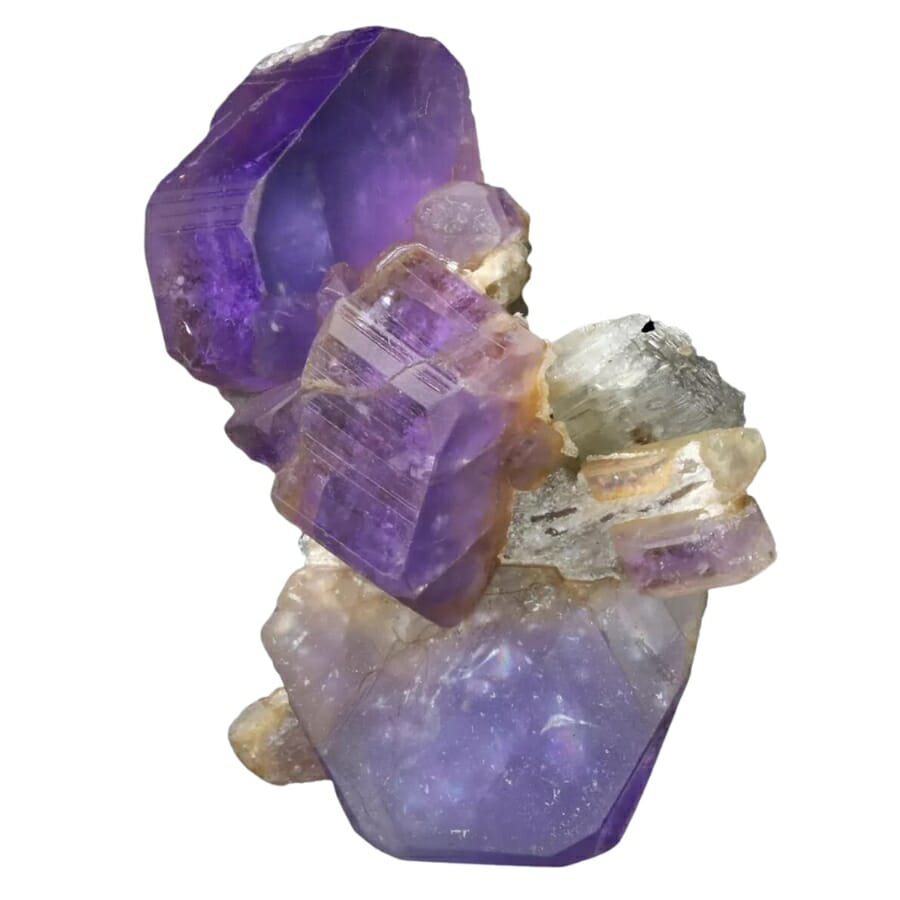
Apatite is a mineral that seems to encapsulate the spectrum of nature’s colors and emerges from the intricate tapestry of geological processes.
Composed mainly of calcium phosphate, apatite’s name originates in the Greek word “apate,” meaning deception, due to its resemblance to other minerals.
This versatile mineral forms within various environments, from igneous to sedimentary, and its mesmerizing hues make it a favorite among collectors and enthusiasts.
Apatite’s formation is as diverse as its appearance, occurring under conditions that vary from the fiery core of volcanoes to the depths of marine sediments. It often develops within the crystallizing magma of igneous rocks and in hydrothermal veins and sedimentary deposits.
Its ability to incorporate trace elements gives rise to its stunning colors, from vivid blues and greens to delicate pinks and purples. This diversity makes apatite a sought-after mineral in gemology and jewelry design.
Apatite plays a crucial role in various industries and scientific applications. In agriculture, apatite’s phosphate content makes it a valuable ingredient in fertilizers, contributing to healthy plant growth and crop yields.
The mineral’s fluorescence under ultraviolet light also serves as a diagnostic tool in geology, helping scientists identify different rock types and geological formations.
Its occurrence in teeth and bones further highlights its significance, as it is a key component in developing skeletal structures in animals, including humans.
Apatite’s charm lies in its multi-faceted nature, embodying the harmony between nature’s craftsmanship and the endeavors of mankind.
Where you can find Apatite in New York
You can find apatite in the following places in the state:
- Crystal Grove Diamond Mine and Campground
- Lyon Mountain
- Oswegatchie River
Corundum
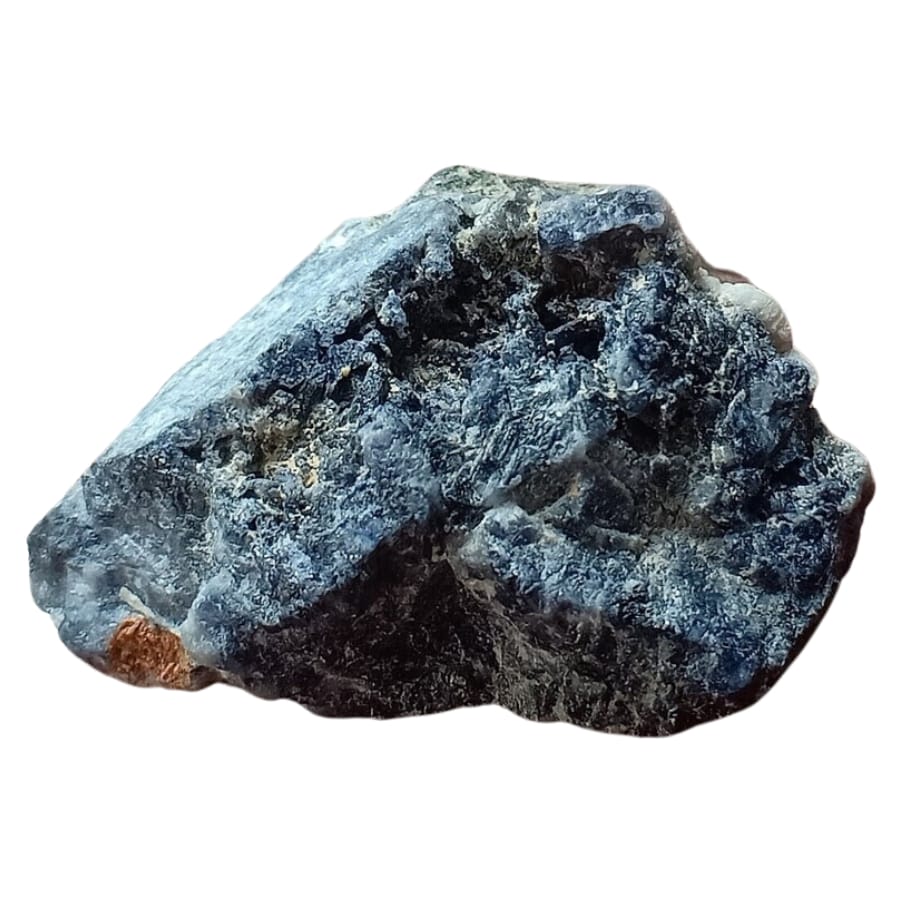
Corundum, a mineral of captivating allure and exceptional hardness, reveals itself in enchanting colors.
Composed mainly of aluminum oxide, this mineral’s formation results from high-temperature geological processes. It originates from igneous and metamorphic environments where extreme heat and pressure sculpt the Earth’s crust.
The fact that corundum crystallizes shows that harsh conditions shape our planet. Corundum crystals form when rocks with a lot of aluminum, like shale and limestone, are heated and pressed very hard.
This process is called metamorphism. This mineral’s beautiful range of colors comes from trace elements like chromium. The hardness and durability of corundum, combined with its remarkable color range, make it an invaluable gemstone in the jewelry world.
Beyond their aesthetic value, corundum’s properties find use in various industrial applications. Its hardness ranks second to diamonds, making it essential in cutting tools, grinding wheels, and abrasives.
Its transparency in the infrared spectrum also renders it valuable in scientific instruments, lasers, and optical components.
The multifaceted significance of corundum lies in its harmonious blend of natural beauty, industrial utility, and cultural reverence. From its role as a symbol of love and wealth to its pivotal place in technological advancement, corundum’s rich legacy has woven a thread connecting ancient traditions to modern innovation.
Where you can find Corundum in New York
Here are the places in the state where corundum is most likely to be found:
- Adirondack Park
- Area limestone outcrops in Amity
Diopside
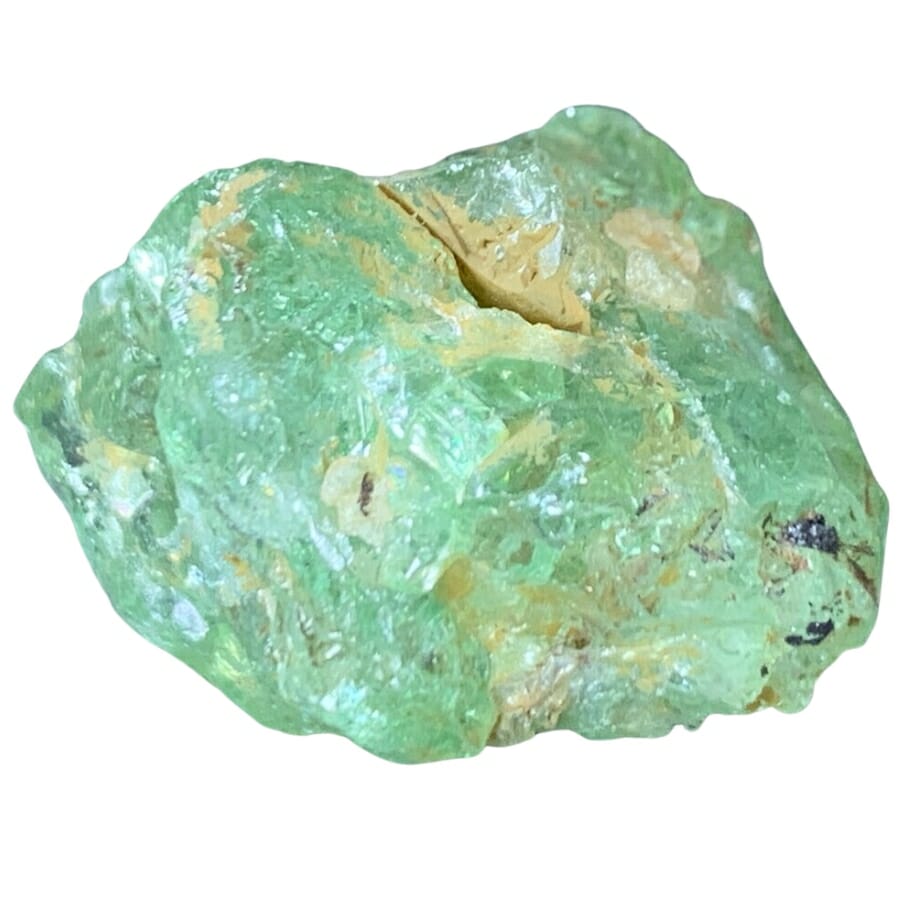
Diopside is a beautiful mineral with bright green colors that comes from the depths of the Earth through complicated geological processes. The name “diopside” comes from the Greek words “dis,” which means “double,” and “opsis,” which means “sight.”
This is because it has a strong property called “pleochroism,” which makes it look different colors when viewed from different angles. This mineral can form in several geological settings but usually comes from igneous and metamorphic rocks.
The formation of diopside is a testament to the transformative powers of heat and pressure deep within the Earth’s crust. As magma cools and crystallizes, it gives rise to the formation of igneous rocks.
In some cases, it develops as a mineral within these rocks, especially in calcium-rich environments. Alternatively, the mineral can arise from the metamorphism of pre-existing rocks, undergoing changes in composition and structure under intense geological pressures.
Although it’s not as widely recognized as some other gemstones, its vibrant green color, and unique optical qualities have earned it a devoted following among collectors and connoisseurs.
Moreover, diopside’s thermal and electrical conductivity has led to its use in manufacturing ceramics, refractories, and electrical insulators.
Diopside’s vibrant appearance and multifaceted significance illustrate the deep connection between Earth’s natural wonders and human appreciation for beauty and knowledge.
Where you can find Diopside in New York
Diopside can be found in places in the state, such as:
- Area quarries of Richville
- Brant Lake
- Lake Harris
Garnet
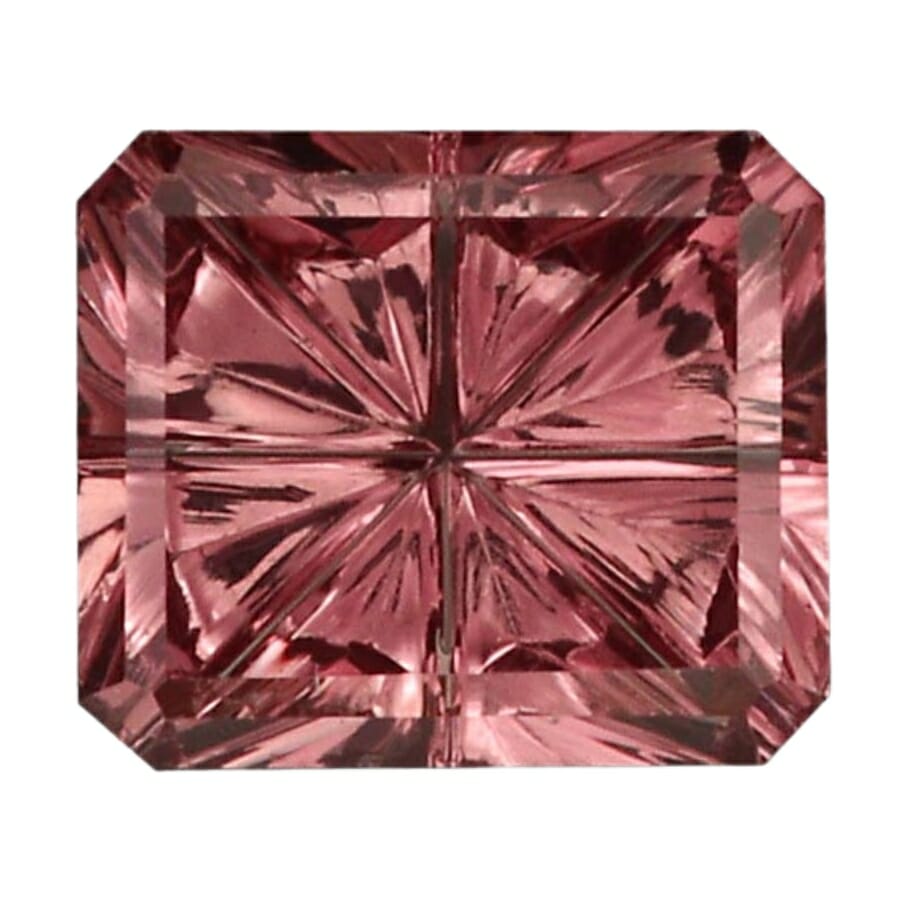
Garnet, a mineral of multifaceted charm and deep, rich hues, emerges from the Earth’s transformational embrace through intricate geological processes.
Comprising a group of silicate minerals with varying chemical compositions, garnets exhibit a remarkable range of colors, from fiery reds to soothing greens.
This mineral forms within diverse geological settings, including metamorphic, igneous, and sedimentary environments. As minerals recrystallize during the metamorphic transformation of rocks, it emerges as a product of these geological changes.
The unique colors within garnets result from the presence of different elements, such as iron, manganese, and aluminum, which lend their distinctive hues to this mineral group.
Garnets often grow in metamorphic rocks like schist or gneiss, where the heat and pressure create the ideal conditions for their crystallization.
Beyond its aesthetic, garnet’s versatility and durability have made it invaluable across various industries. Its hardness makes it an ideal abrasive material for tools, sandpaper, and waterjet cutting.
Garnet sand is also used in water filtration systems and as a natural abrasive in cleaning. In addition to its industrial applications, garnet’s captivating appearance has made it a sought-after gemstone for centuries, adorning jewelry and decorative items.
Whether embraced as a gemstone or harnessed for its practical uses, garnet embodies the intricate harmony between the Earth’s geological processes and the complex desires of the human heart and mind.
If you’re curious how much garnet is worth, we’ve written an article detailing your needed information.
Where you can find Garnet in New York
Garnet can be found all over New York, especially in the places below:
- Ace of Diamond Mine and Campground
- Adirondack Park
- Area mines of Mt. Bigelow in Essex County
- Hooper Garnet Mine
- Old mines of Oven Mountain
Labradorite
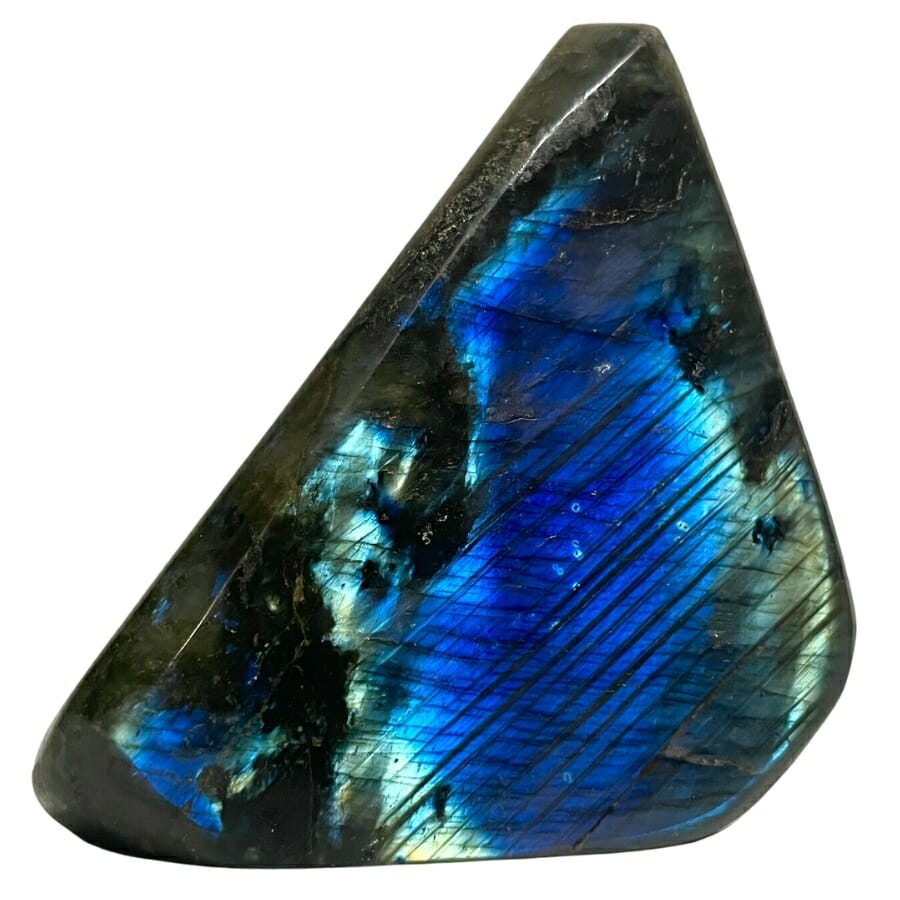
Labradorite is a mineral that seems to hold the magic of the Northern Lights in its shimmering depths. It’s a great example of how well the Earth’s rocks were put together.
It’s a beautiful gemstone with a structure made of silicates rich in feldspar and iridescent layers. Its play of colors reminds me of a rainbow dancing across the night sky.
This mineral forms in igneous rocks, especially where there is a lot of volcanic activity or magma flows into the ground.
The formation of labradorite unfolds as molten magma cools and solidifies, creating the perfect environment for the growth of distinct crystals. As this process occurs, labradorite’s unique iridescence, known as labradorescence, arises due to the interference and scattering of light across its layers.
Its remarkable optical effect results from the mineral’s composition and the intricate interplay of its crystals. The mineral’s hardness and durability make it suitable for carvings, sculptures, and decorative objects.
Its ability to evoke wonder and captivate the imagination and its geological rarity make labradorite a gemstone cherished by people worldwide.
Where you can find Labradorite in New York
Here are a list of places where you can find labradorite:
- Candice Lake
- Cascade Lakes
- Gravel beds and bars of Opalescent River
- Honeoye Lake
Sapphire
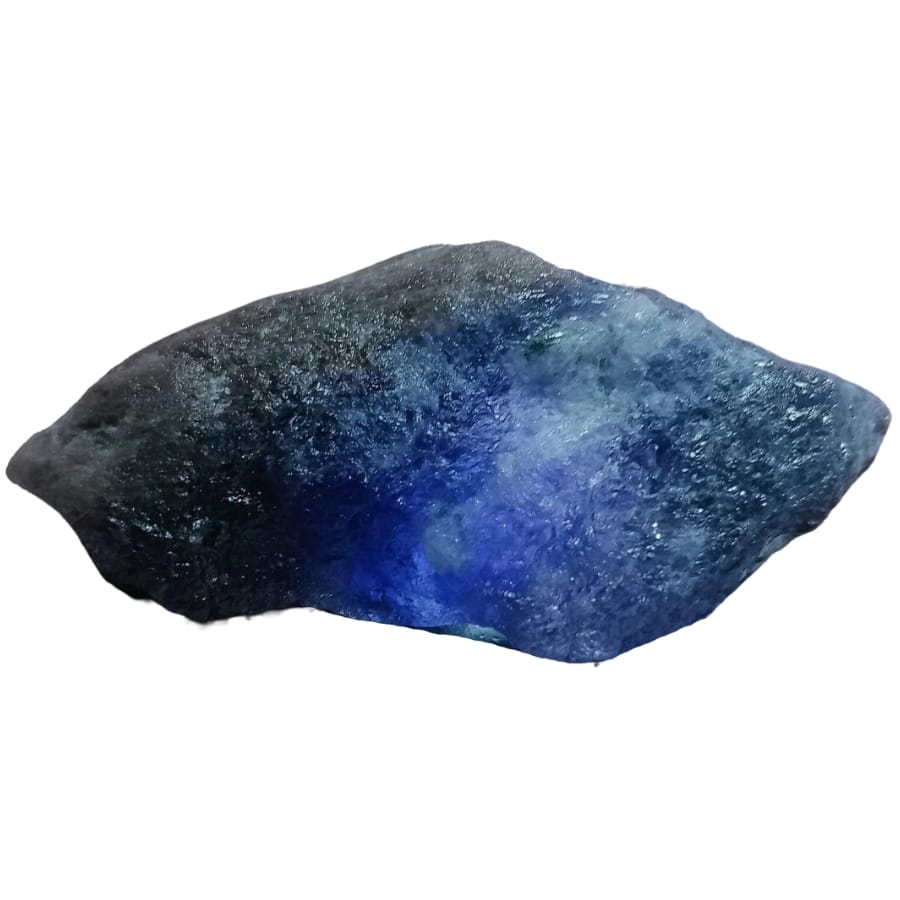
Sapphire is a mineral with beautiful, deep colors that draw people in. It’s a sign of wisdom, loyalty, and nobility. It’s mostly made of corundum, which is an aluminum oxide crystal.
People have been interested in sapphire’s distinctive blue color for thousands of years. Deep inside the Earth’s crust, heat, pressure, and trace elements work together to make this valuable gemstone.
The formation of sapphire results from the same geological forces that shape rubies, with the primary difference being the presence of different trace elements. These elements, such as iron and titanium, lend sapphire its range of colors, including the sought-after blue that has become synonymous with this gemstone.
The process begins within igneous and metamorphic environments, where corundum crystals form under immense heat and pressure. Incorporating these trace elements imbues the corundum crystals with their distinctive hues.
Its use in electronics, optics, and scientific instruments underscores its contribution to cutting-edge technology and innovation.
Meanwhile, its role in advancing technology and enhancing the functionality of various industries showcases its broader impact on modern society.
Sapphire is more than just a mineral; it reflects the Earth’s geological wonders and is a testament to humanity’s appreciation for both the aesthetic and the practical.
We’ve put together an article about sapphire’s value and current price for everyone who wants to learn more about it.
Where you can find Sapphire in New York
You can find sapphire deposits at the Ace of Diamond Mine and Campground.
Sunstone
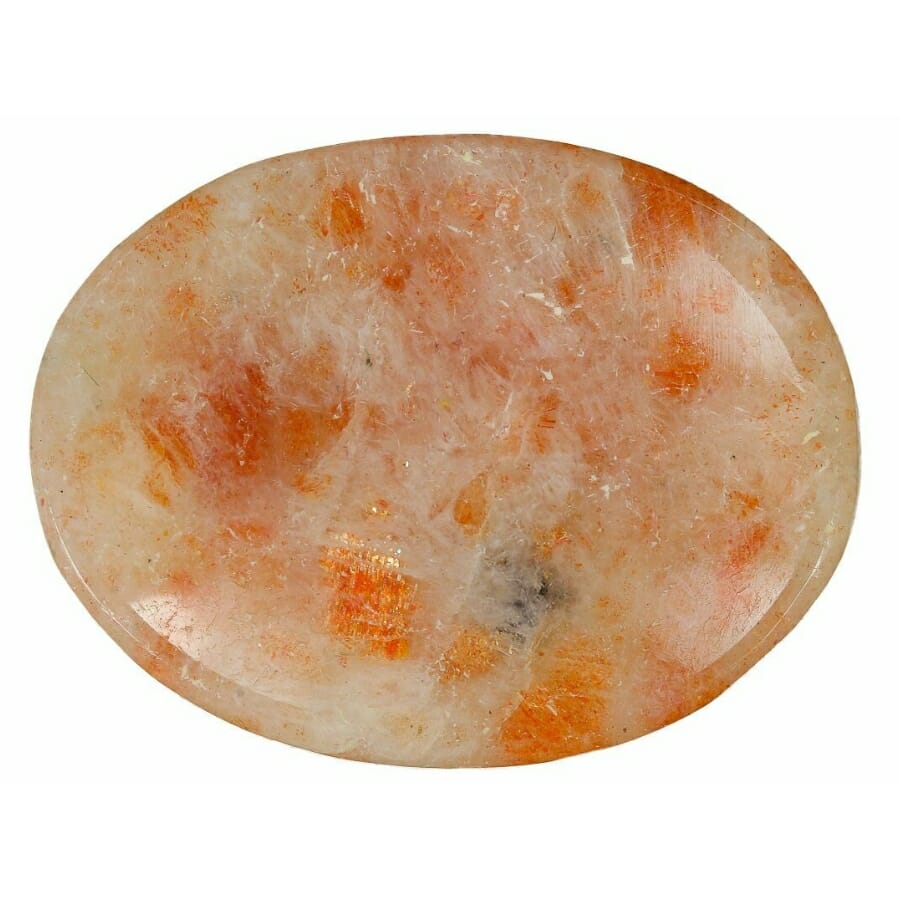
Sunstone, a gem of otherworldly charm and iridescent splendor, emerges from the heart of the Earth through a geological dance that captivates the eye. Made mainly of feldspar with inclusions of minerals like hematite or copper, sunstone’s name captures its fiery appearance, reminiscent of the sun’s warm glow.
This captivating mineral forms within igneous rocks, often originating from volcanic processes. The formation of it begins as magma slowly cools and solidifies deep within the Earth’s crust, creating an environment conducive to the growth of crystals.
As the magma hardens, layers of feldspar and other minerals interlock, trapping tiny platelets of hematite or copper. These platelets are responsible for the mesmerizing play of colors that sunstone is famous for.
As light interacts with these inclusions, it scatters and refracts, creating a stunning dance of vibrant oranges, reds, and golds. Its unique play of colors mirrors nature’s vibrant beauty, and its jewelry use connects the wearer to the Earth’s artistry.
Cut into faceted gemstones or polished into cabochons, its dazzling play of colors makes it a favorite among designers and collectors. While it’s not as widely known as some other gemstones, its radiant appearance and connection to the natural world have garnered it a devoted following.
Whether admired for its dazzling iridescence or appreciated for its symbolic resonance, sunstone is a testament to the harmonious blend of science, art, and the natural world.
Where you can find Sunstone in New York
There is a lot of sunstone in the following places in New York:
- Area outcrops and gravels Crown Point
- Fisher Hill Mine
- Owl’s Head Mountain Trail
The Crystals Found In New York
In New York, you can find a lot of beautiful crystals that collectors and people who like crystals will find valuable. Read on to learn more about these crystals.
We’ve also written a more in-depth article about where to find crystals in New York:
Bloodstone
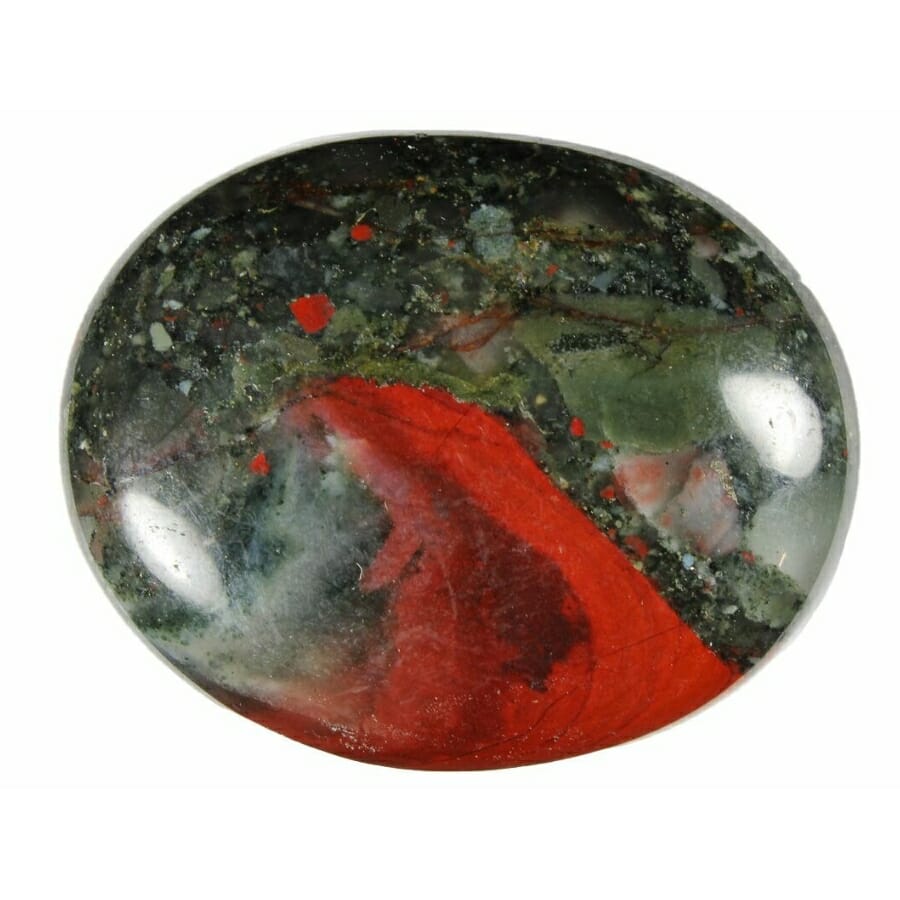
Bloodstone, a captivating gem of ancient legend and deep, rich hues, emerges from the Earth’s embrace through a geological dance that intertwines minerals and history.
Composed mainly of chalcedony with inclusions of red iron oxide, its name evokes its appearance—resembling drops of blood against a verdant background. This intriguing gemstone forms within sedimentary rocks and volcanic environments.
Its formation begins as chalcedony, a type of microcrystalline quartz, interacts with mineral-rich fluids in the Earth’s crust. Over time, these fluids deposit iron oxides and other impurities, giving bloodstone its characteristic red specks or patches against a green backdrop.
Cut into cabochons or carved into intricate designs, this gemstone has adorned jewelry and amulets for millennia. Its durable nature makes it suitable for various types of jewelry, from rings to pendants.
Bloodstone’s stunning colors and unique patterns captivate the eye, while its rich history and symbolic meaning resonate deeply with those seeking to carry a piece of Earth’s mystique.
Where you can find Bloodstone in New York
Bloodstones are often found in these places in New York:
- Craigsville along highway 94
- Hudson River area in Orange County
Celestite
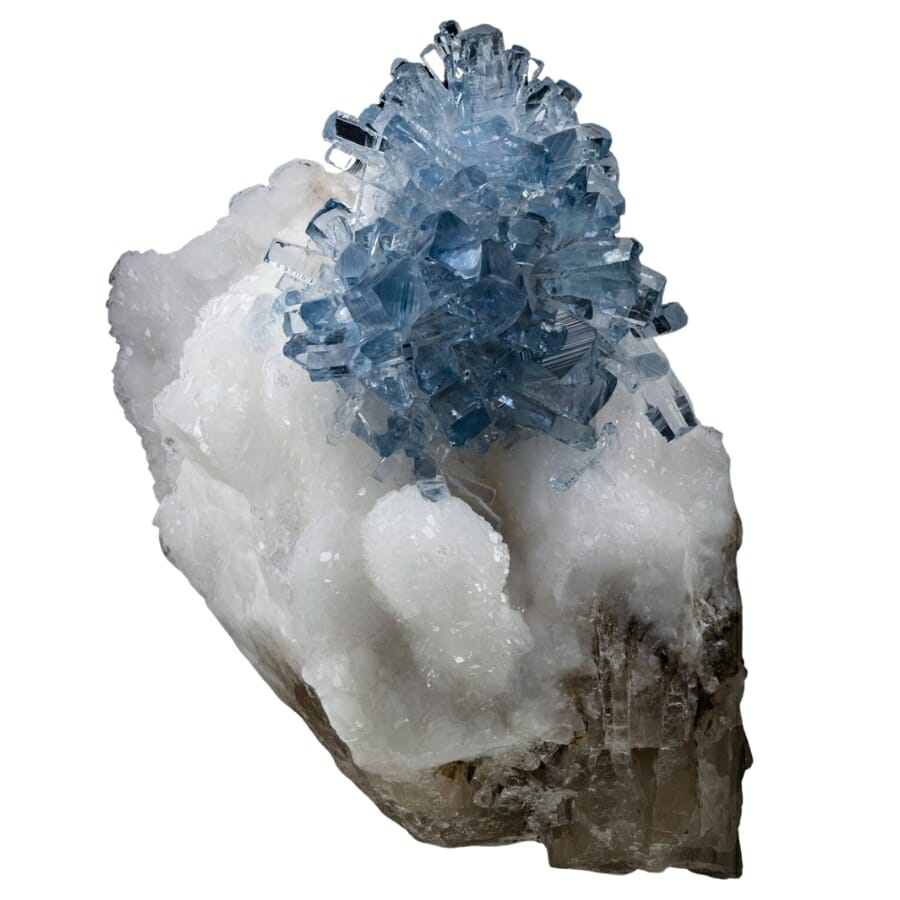
Celestite, a mineral of celestial beauty and delicate hues, emerges as a reflection of the skies within the Earth’s geological canvas.
Composed mainly of strontium sulfate, its name is derived from the Latin word “caelestis,” meaning heavenly or celestial, due to its blue shades reminiscent of the sky.
In ancient oceanic environments, the gradual accumulation of strontium-rich minerals and other chemical reactions led to the creation of its deposits.
As these sediments compacted and solidified over time, they formed rocks containing pockets or geodes of crystalline celestite. The unique blue color that defines it arises from the presence of strontium in its crystal lattice.
The mineral’s gentle blue tones have led to its use as a pigment in the ceramics, paint, and glass industries. Its natural crystal formations have also made it a favored collectible among mineral enthusiasts and collectors.
The charm of celestite lies in its ability to evoke a sense of wonder and connection to the cosmos. Its formation within the Earth’s history echoes the profound interactions between water, minerals, and geological forces.
Where you can find Celestite in New York
Celestite is abundant in the following areas in New York:
- Area quarries of Chittenango Falls
- Area exposures of the Roundout Waterline
Fluorite
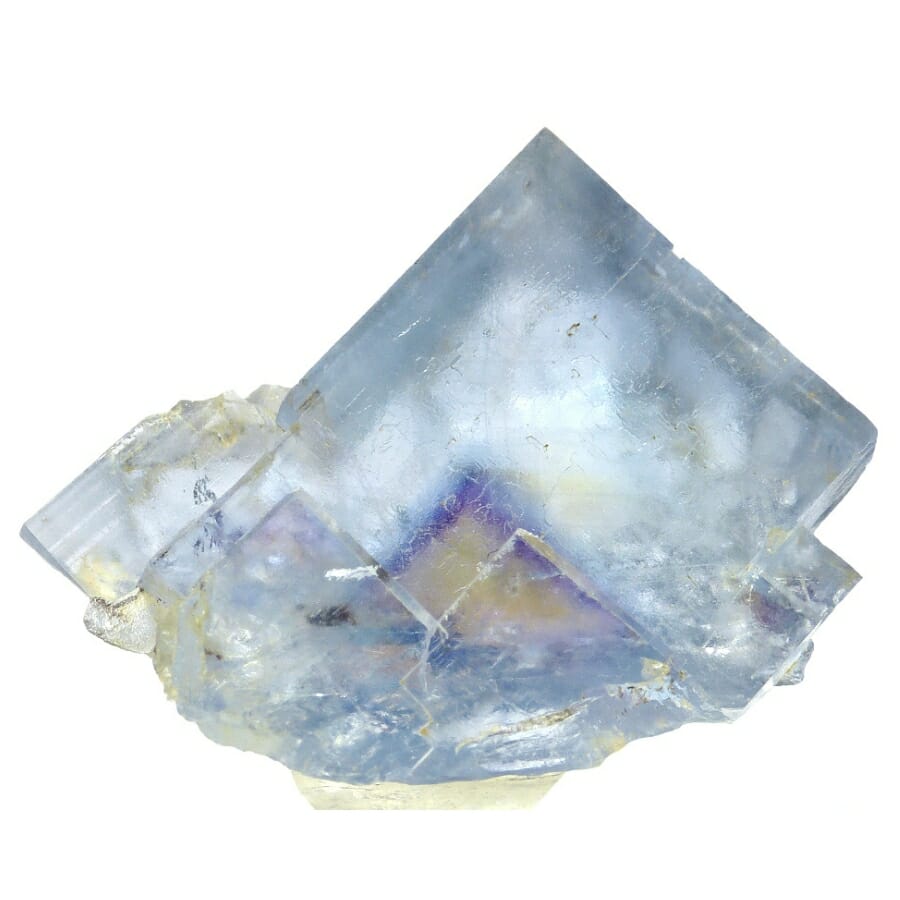
Fluorite’s appealing range of colors, often exhibiting intricate patterns and vibrant hues, has made it a favorite among mineral enthusiasts and collectors. This mineral forms within various geological environments, from hydrothermal veins to sedimentary deposits.
The formation of the mineral is a product of the interaction between hydrothermal fluids and existing rocks. As mineral-rich solutions circulate through the Earth’s crust, they dissolve and carry various elements, including calcium and fluorine.
When these fluids encounter spaces within rocks, they cool and deposit the dissolved minerals, leading to the growth of fluorite crystals.
The broad spectrum of colors seen in fluorite results from different trace elements present during crystal growth, and the level of light absorption and dispersion varies across other specimens.
Its distinctive property of fluorescence under ultraviolet light has led to its use in making fluorescent lights and scientific research and spectroscopy. Additionally, fluorite’s transparency in the infrared range makes it valuable in manufacturing optical components like lenses and prisms.
Its role in the steel and aluminum industries as a flux, aiding in removing impurities during smelting, further underlines its industrial significance.
Its remarkable appearance, diversity, and practical properties make fluorite a valuable mineral that transcends the boundaries between science and art, showcasing the intricate connection between the Earth’s creations and human imagination.
Where you can find Fluorite in New York
You can find fluorite deposits in these places in the state:
- Muscalonge Lake
- Oswegatchie River
- Palmer Hiss Mine
- Rylestone Quarry
Galena
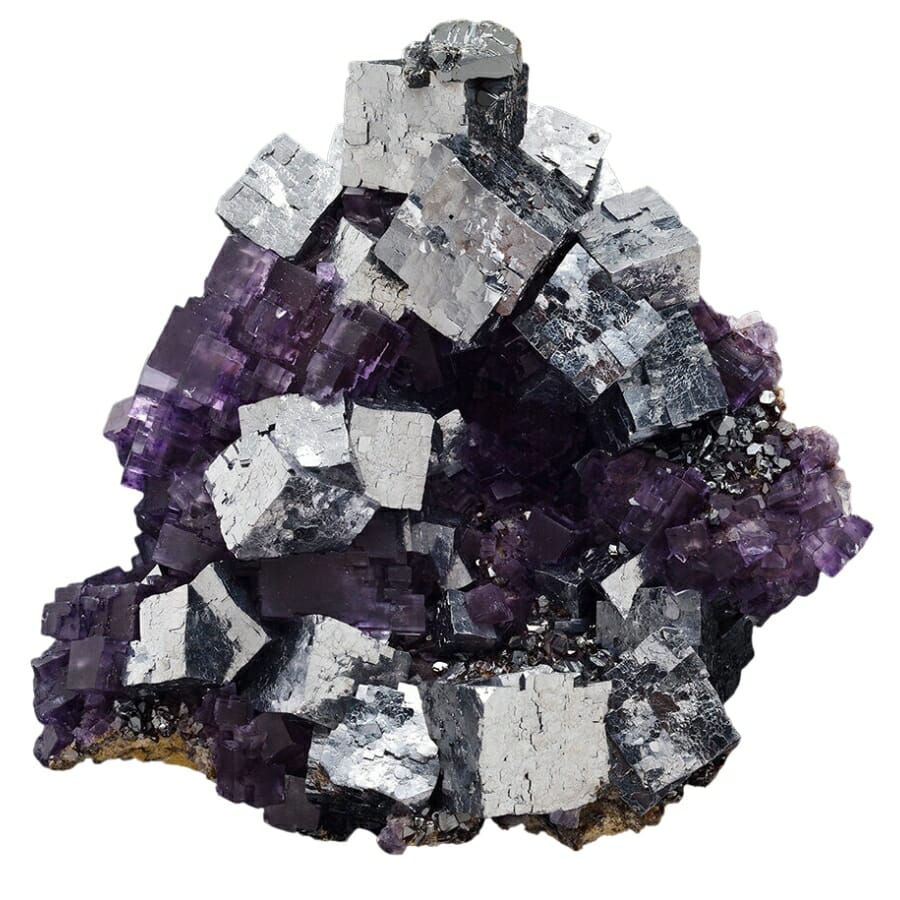
Galena, a mineral with a rich history and striking metallic luster, emerges from Earth’s depths through complex geological processes.
Composed mainly of lead sulfide, it has been a valuable resource for centuries, with its name derived from the Latin word “galena,” meaning lead ore. This mineral forms primarily in hydrothermal veins and sedimentary environments, often crystallizing in cubic or octahedral shapes.
The formation of this mineral is intertwined with the hydrothermal circulation of mineral-rich fluids within the Earth’s crust. As these fluids move through fractures and cavities in rocks, they interact with various elements, including lead and sulfur, and precipitate crystals.
Galena’s association with lead has made it a vital metal source for numerous industrial applications. Its value has been recognized throughout history for its role in producing lead, a metal of significant importance for various industrial processes.
It was used extensively to produce construction lead, batteries, and ammunition. In modern times, lead’s toxicity has led to decreased use, but galena remains a silver source, often found as a byproduct within the mineral.
Galena tells a story of the Earth’s geological evolution, while its varied uses, from industrial to ornamental, reflect its ability to contribute to both practicality and aesthetic appreciation.
Where you can find Galena in New York
A lot of areas contain galena in New York, including:
- Balmat-Edwards Zinc Deposit
- Dutchess County area mines
- Phoenix Mine
Hematite
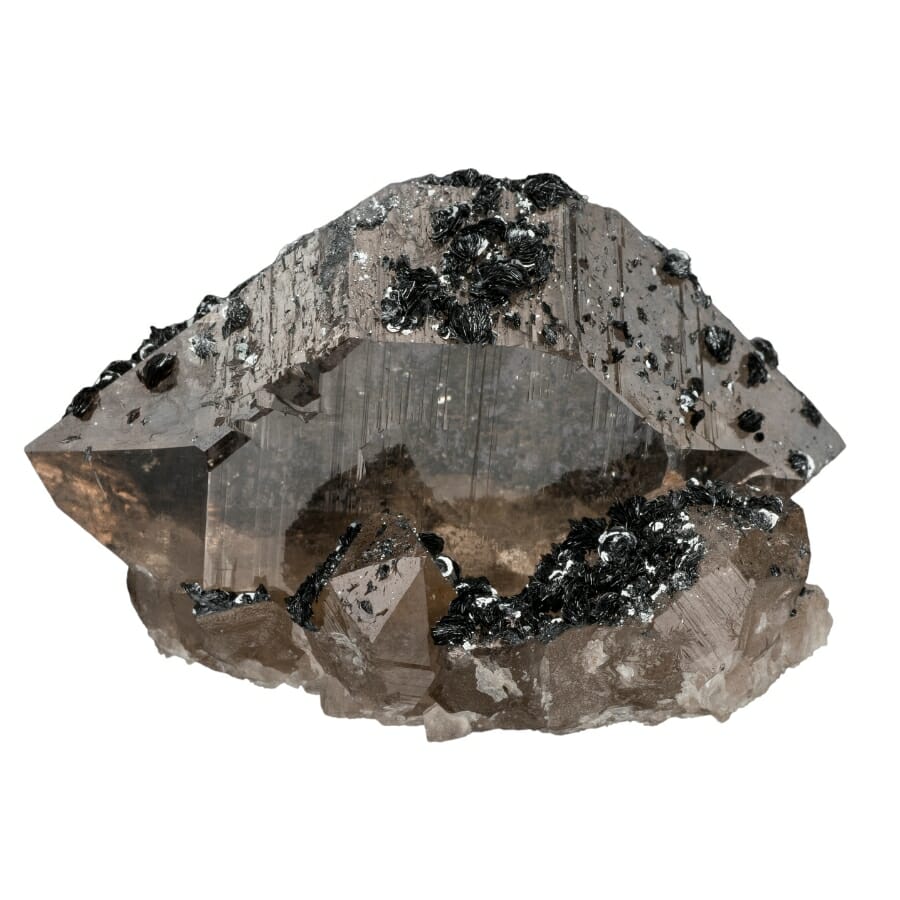
Hematite derives its name from the Greek word “haima,” meaning blood, due to its striking red color when powdered. This mineral forms in various environments, from hydrothermal veins to sedimentary deposits, and its presence on Mars has even intrigued planetary scientists.
In hydrothermal environments, hot mineral-rich waters circulate through cracks and cavities within rocks, depositing iron oxide as they cool. This process leads to the formation of hematite crystals, often exhibiting a metallic luster.
In sedimentary environments, hematite can develop through the accumulation of iron-rich sediments over time. Additionally, hematite’s presence on Mars has sparked interest in understanding its formation in extraterrestrial contexts, potentially shedding light on its geological history.
Its red pigment has been used in paints, dyes, and cosmetics, contributing to cultural and artistic expressions. Hematite’s magnetic properties have also made it valuable in scientific research and industrial applications, including as a component in magnetic storage devices and water purification.
The value of hematite lies in its multifaceted nature, embodying the practical and aesthetic aspects of the Earth’s geological treasures.
Where you can find Hematite in New York
Hematite is abundant in these places in New York:
- Area stream beds and sedimentary exposures of Fowler
- Lyon Mountain
Muscovite
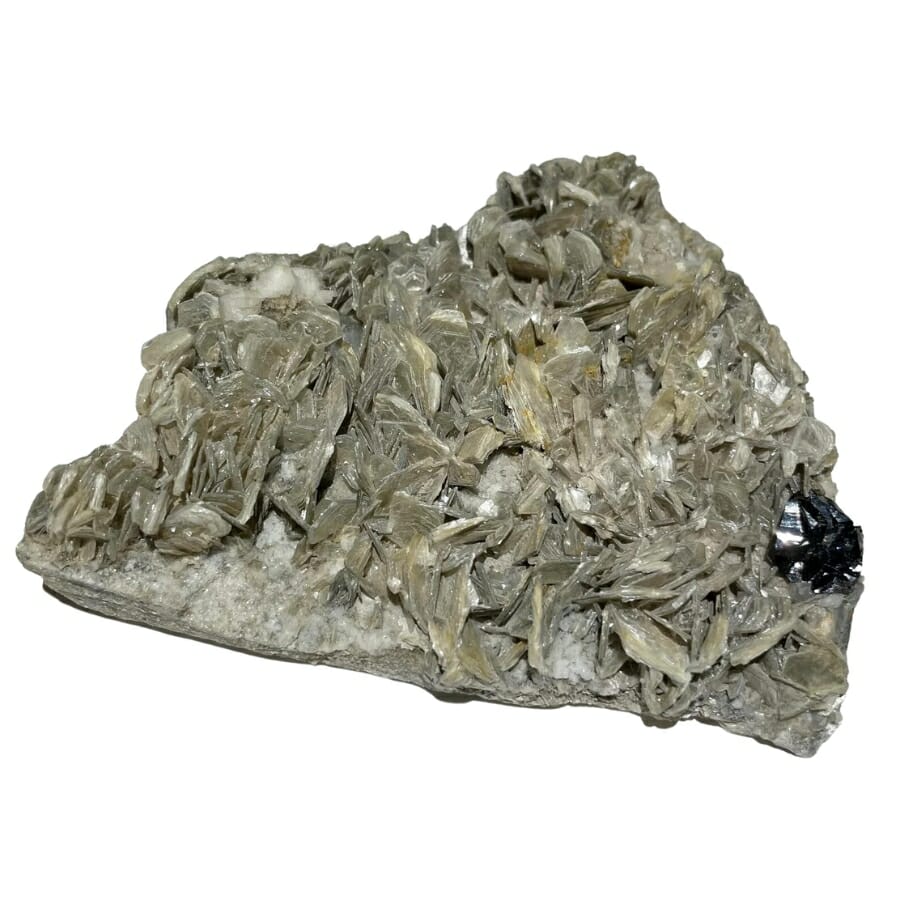
Muscovite, a mineral with a delicate shimmer and a connection to Earth’s geological evolution, is a testament to the dynamic interplay of heat, pressure, and minerals within the planet’s crust.
The formation of this mineral is intricately linked to the metamorphic alteration of rocks like granite and schist. As heat and pressure reshape the mineral composition of pre-existing rocks, muscovite emerges as a product of this transformation.
Its characteristic layered structure forms as aluminum and silicate ions arrange themselves in sheets, resulting in its distinctive “flakey” habit.
This mineral’s impressive elasticity and thinness have led to its use in the manufacturing of insulating materials, electrical components, and even as a substitute for window glass in some regions.
Its shimmering appearance and ability to split into thin sheets have made it a favored material for decorative purposes, including jewelry and figurines.
In the scientific world, muscovite’s transparency in thin sections has made it invaluable in microscopy and petrology studies.
Where you can find Muscovite in New York
There are many muscovite deposits in New York, specifically in these places:
- Brant Lake
- Lake Harris
Stilbite
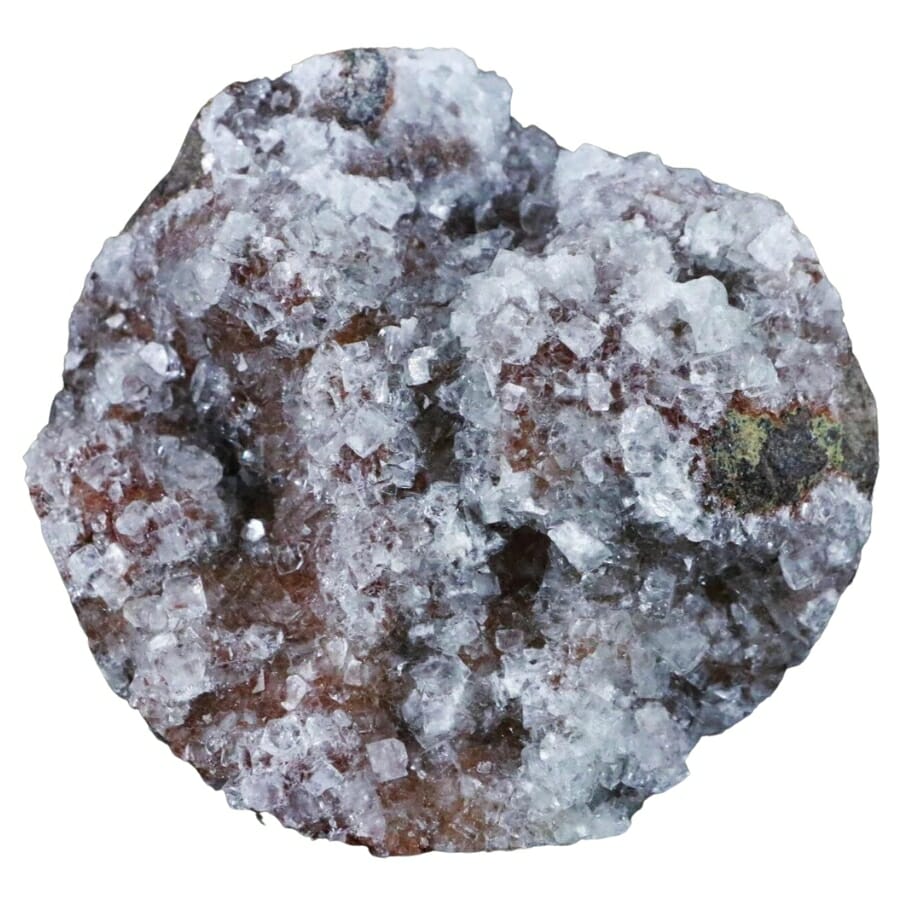
Comprising a framework of aluminum and silicon, stilbite’s name is derived from the Greek word “stilbein,” meaning to shine, due to its distinctive luster. This mineral forms within cavities and voids of volcanic rocks, often creating mesmerizing clusters of delicate, needle-like crystals.
The formation of stilbite unfolds in volcanic environments, where mineral-rich fluids interact with the porous spaces within igneous rocks. As these fluids cool and solidify, they deposit minerals such as stilbite, which crystallize into unique formations.
Its delicate crystals often create intricate clusters that sprout like ethereal blossoms. The mineral’s vibrant colors and structures make it a favorite among mineral collectors, and its softness allows it to be easily shaped into ornamental objects.
The mineral’s delicate appearance and varied colors make it a sought-after component in lapidary arts, where it is fashioned into cabochons, carvings, and decorative objects.
Stilbite’s natural porosity also makes it useful in water purification systems, where it acts as an adsorbent to remove impurities. Its energy is often associated with feelings of calmness and tranquility, leading to its use in metaphysical practices as a stone that promotes relaxation and inner peace.
Stilbite’s allure lies in its harmonious blend of fragility and beauty, embodying the intricate dance between Earth’s geological processes and the creativity of human expression. Its formation within the heart of volcanic rocks mirrors the transformative powers that shape our planet’s crust.
Where you can find Stilbite in New York
The Lyon Mountain in New York contains stilbite deposits.
The Most Valuable Rocks and Minerals in New York
Now that we’ve discussed the different rocks, minerals, and gems in New York, let’s talk about the most valuable ones. If you look around the state, you might be lucky enough to find them.
Brucite
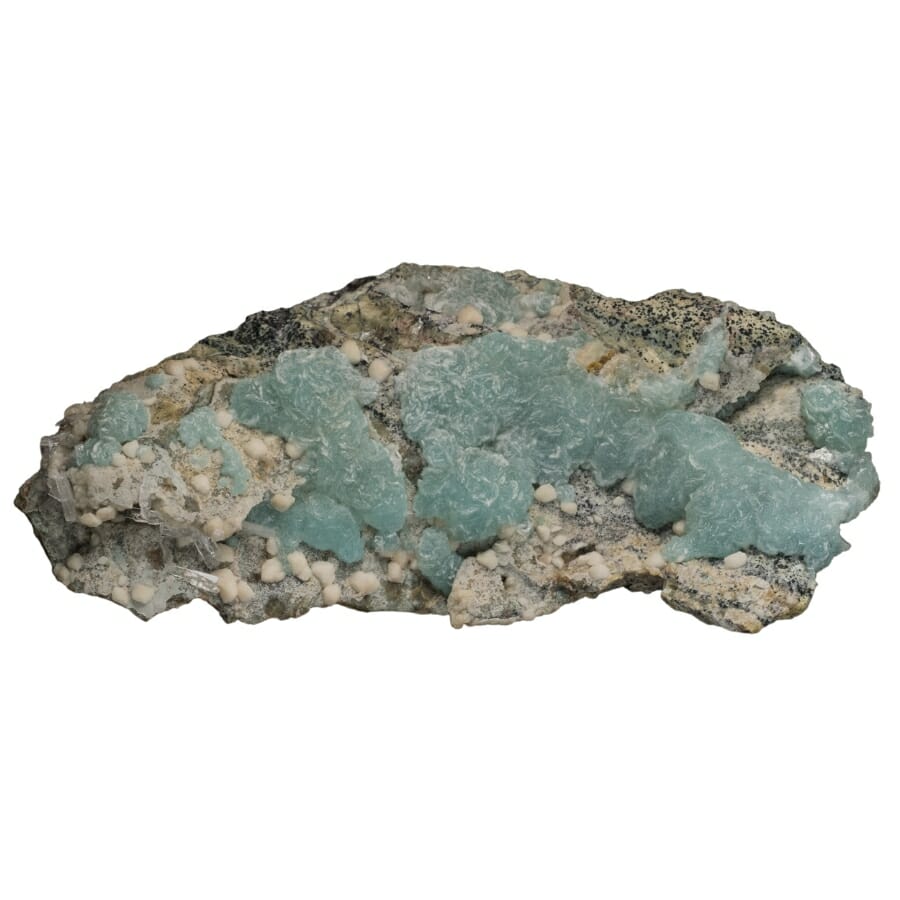
Brucite, a mineral of understated beauty and soothing hues, emerges from the intricate processes of the Earth’s geological tapestry.
Mainly made of magnesium hydroxide, brucite’s name pays tribute to Archibald Bruce, a Scottish mineralogist. It forms by altering magnesium-rich rocks, often appearing as delicate, pale green to white crystals.
Because it doesn’t catch fire, it is used as an ingredient in fire-resistant materials like plastics and building materials. It’s also used in environmental restoration, where it’s used to neutralize acidic waste and help plants grow on damaged land.
Whether valued for its role in fire safety and environmental restoration, or appreciated for its delicate aesthetics, brucite stands as a mineral that bridges the gap between Earth’s geological intricacies and the practical needs of society.
Where you can find Brucite in New York
You can find brucite minerals at the Tilly Foster Mine.
Herkimer Diamond
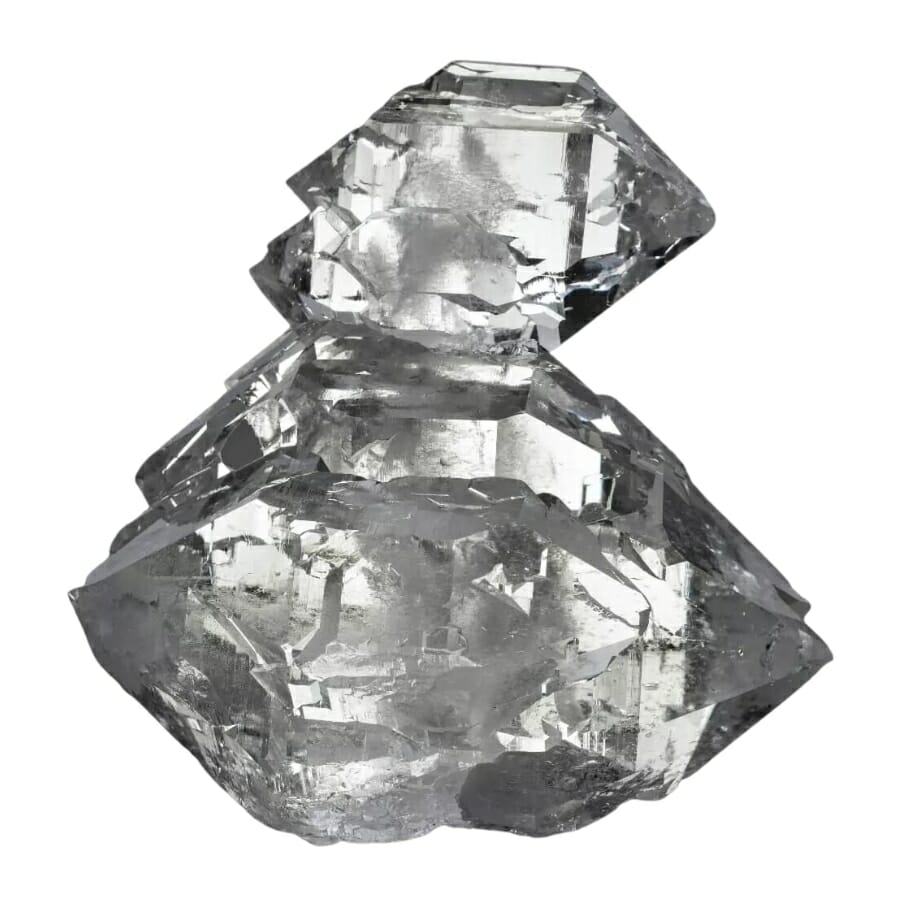
Herkimer Diamond, a sparkling jewel of the mineral world, emerges as a unique and captivating treasure in quartz crystals.
Contrary to its name, Herkimer Diamonds are not diamonds but rather exceptional doubly-terminated quartz crystals found in Herkimer County, New York.
These crystals are renowned for their exceptional clarity, remarkable geometric shapes, and ability to refract light in stunning ways.
The formation of these minerals is a product of ancient geological processes. They are found in dolostone or limestone cavities that formed millions of years ago.
These cavities provided the perfect environment for quartz crystals to grow in doubly-terminated shapes, free from the restraints of the surrounding rock.
“Doubly-terminated” refers to crystals with distinct terminations, or points, at both ends, allowing them to grow freely in open spaces. This unique formation contributes to the Herkimer Diamond’s distinctive appearance.
Their geometric precision makes them ideal for crafting into jewelry, such as necklaces, rings, and earrings. Beyond their beauty, they are treasured by collectors and jewelry enthusiasts for their exceptional clarity and natural beauty.
Where you can find Herkimer Diamond in New York
Herkimer Diamond deposits are abundant in these places:
- Ace of Diamond Mine
- Diamond Acres Mine
- Herkimer Diamond Mine
- Little Nose Hill
- Paradise Falls
Scapolite
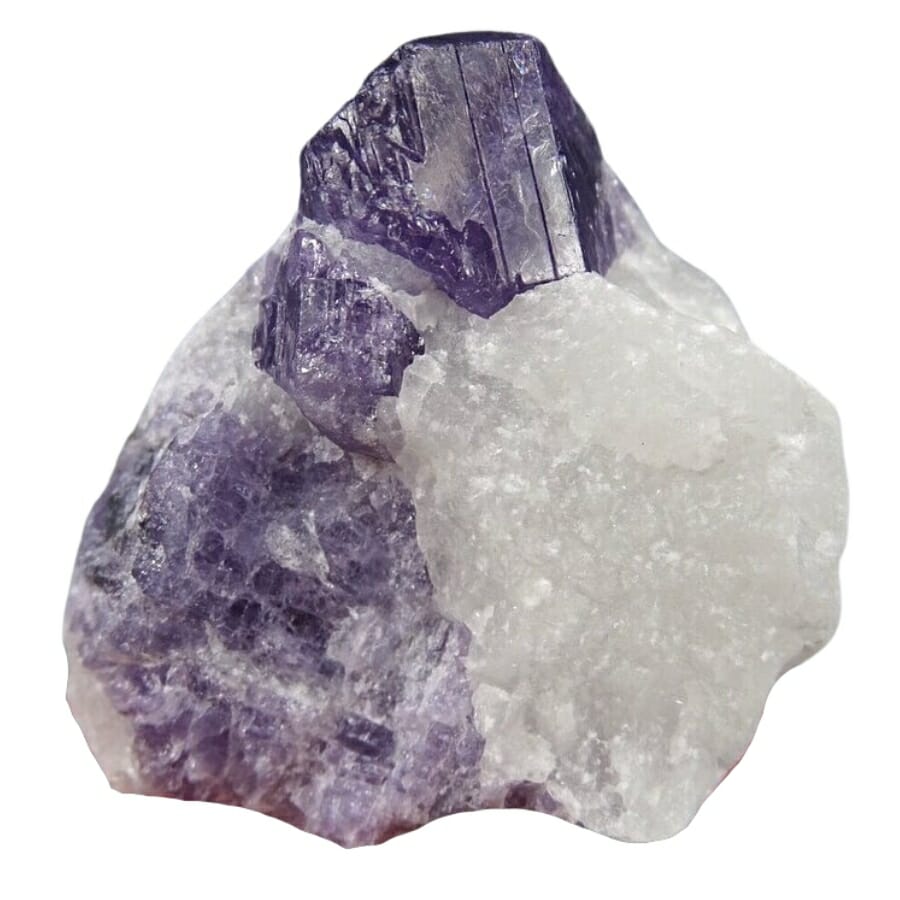
Scapolite, a lesser-known gemstone, is a testament to the Earth’s geological artistry.
Containing silicate minerals with varying compositions, scapolite’s name is derived from the Greek word “skapos,” meaning rod or stem, due to its elongated crystal shapes.
This intriguing mineral forms within metamorphic and igneous rocks, often exhibiting various colors from yellow to purple. In metamorphic environments, it forms as a response to altering pre-existing minerals under elevated temperatures and pressures.
The mineral’s vibrant color variations arise from trace elements within its crystal lattice, producing shades ranging from pale to deep hues. This wide range of colors contributes to scapolite’s appeal among gemstone enthusiasts.
In gemology, scapolite is fashioned into cabochons, beads, and faceted gemstones, often adorning jewelry pieces. Its unique combination of colors and attractive vitreous luster make it an intriguing choice for those seeking a distinctive gemstone.
Its formation, shaped by geological forces, tells a story of Earth’s transformative processes. Meanwhile, its use in decorative arts showcases its ability to bridge the gap between the material and the ethereal.
Where you can find Scapolite in New York
Scapolite can be found in these areas:
- East of Minerva area
- Lake Harris Campground
Scorodite
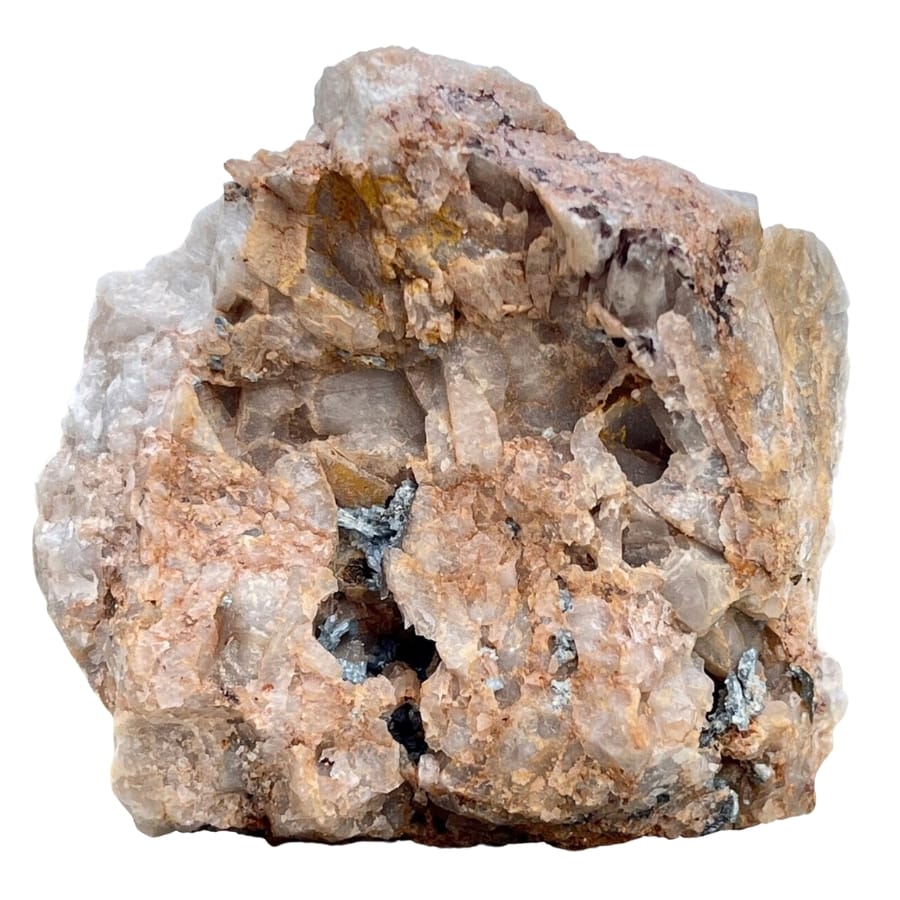
Scorodite is made up of iron, arsenic, and oxygen. Its name originates from the Greek word “skorodion,” referring to the strong odor emitted when heated.
This intriguing mineral forms as a product of the interaction between iron-bearing minerals and arsenic-rich solutions, often displaying striking crystal formations in shades of green and blue.
The formation of scorodite results from the alteration of iron-containing minerals in the presence of arsenic-rich fluids. This process can occur in hydrothermal veins, where hot mineral-laden fluids circulate through cracks and cavities within rocks.
As these fluids come into contact with iron-bearing minerals, they react with the surrounding environment, precipitating scorodite crystals.
In some cases, scorodite can also form as a product of the weathering of sulfide minerals containing arsenic. Its characteristic prismatic crystals and vibrant coloration make scorodite a visually captivating mineral.
Due to its arsenic content, it’s often associated with acid mine drainage—the result of mineral excavation that exposes sulfide minerals to air and water, releasing toxic substances into the environment.
Scorodite’s formation helps sequester arsenic, reducing its mobility and potentially harming ecosystems. This mineral’s ability to encapsulate arsenic makes it valuable in mitigating environmental contamination caused by mining activities.
Its formation reveals the intricate chemical reactions within the Earth’s crust, while its environmental role showcases its significance in addressing the ecological challenges posed by human activities.
Where you can find Scorodite in New York
You may be able to locate scorodite minerals at the mines between Edenville and Mt. Adam.
How to Identify The Rocks and Minerals You Find
To tell rocks and minerals apart, you don’t need to know much about them or have fancy tools. These simple tests can help you determine what a sample is on your own.
Assess the color
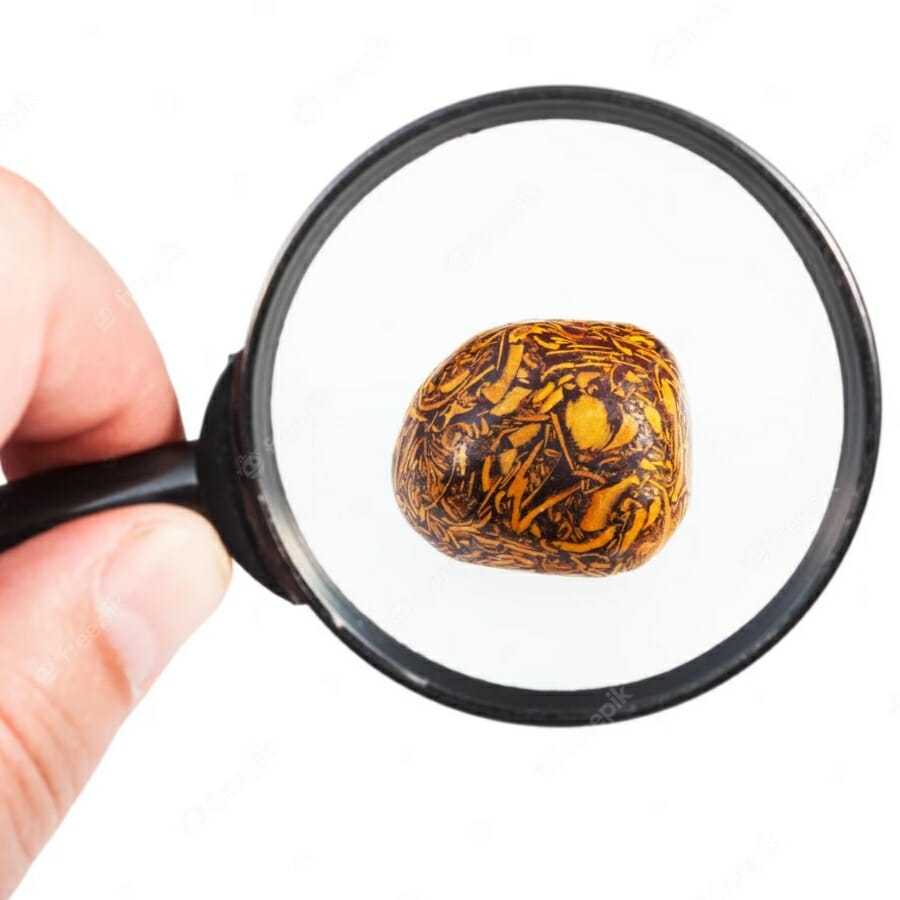
Determining the color of a rock or mineral involves visually observing its external hue under normal lighting conditions.
Examine the rock or mineral under natural daylight, if possible. Sunlight provides the most accurate representation of color.
Use consistent and even artificial lighting to view the sample if natural light is unavailable. Avoid colored or tinted light sources, as they can alter the perception of color.
Place the rock or mineral against a neutral background, such as a white paper or a light-colored surface. This helps prevent any surrounding colors from influencing your perception.
Look at the rock or mineral carefully. Identify the primary color that covers the majority of the sample’s surface. Take note of any variations, streaks, or patterns within the color.
It’s important to note that color alone is not always a reliable indicator for identifying minerals, as many can occur in various colors.
Observe its luster
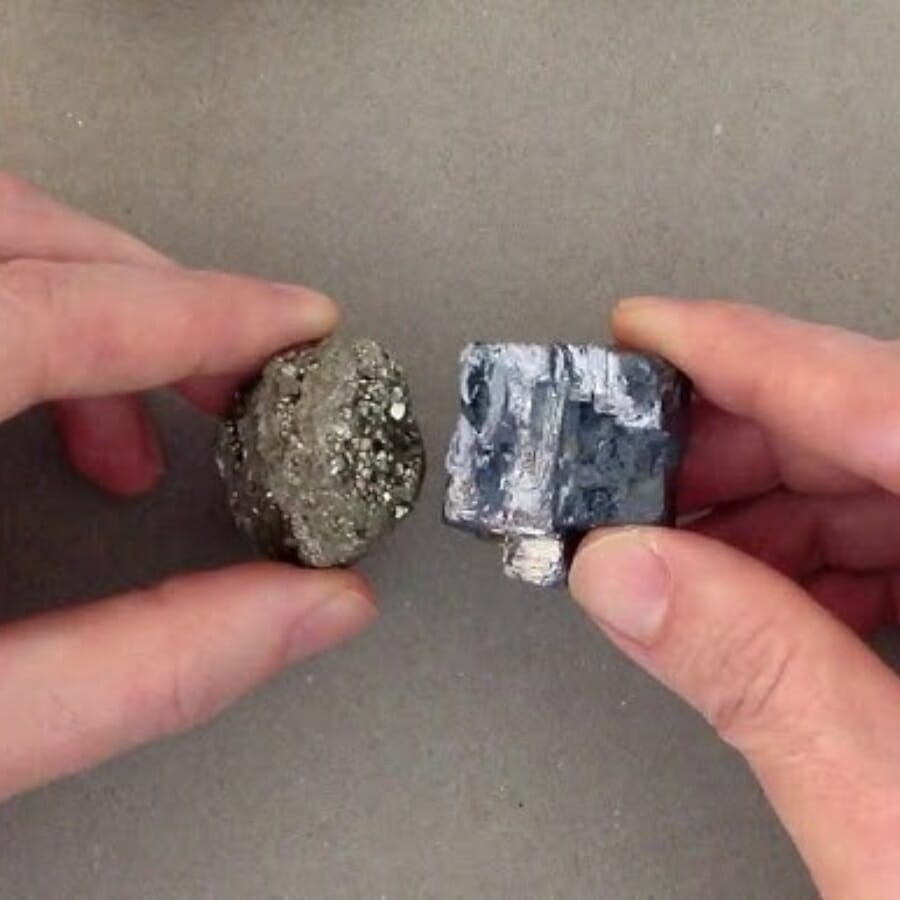
Luster is an essential diagnostic property that can help identify and classify minerals.
Observe how the sample reflects light. Minerals can have metallic, non-metallic, or glassy luster. This can provide clues to its identity.
Hold the rock or mineral to face you and the light source. This allows you to see how the light interacts with the surface. Then, observe how the surface of the rock or mineral reflects light. Pay attention to the quality and intensity of the reflection.
Metallic luster is a bright, shiny, reflective surface resembling polished metal. It often indicates the presence of metals within the mineral. Minerals like pyrite, galena, and hematite typically exhibit metallic luster.
Non-metallic luster doesn’t shine like metal but can have various other appearances. Some common types of non-metallic luster include vitreous (glassy), pearly, greasy, silky, waxy, and resinous. These lusters can indicate different mineral properties and compositions.
Compare the observed luster to known examples of metallic and non-metallic lusters. This can help you classify the luster accurately.
Conduct a streak test
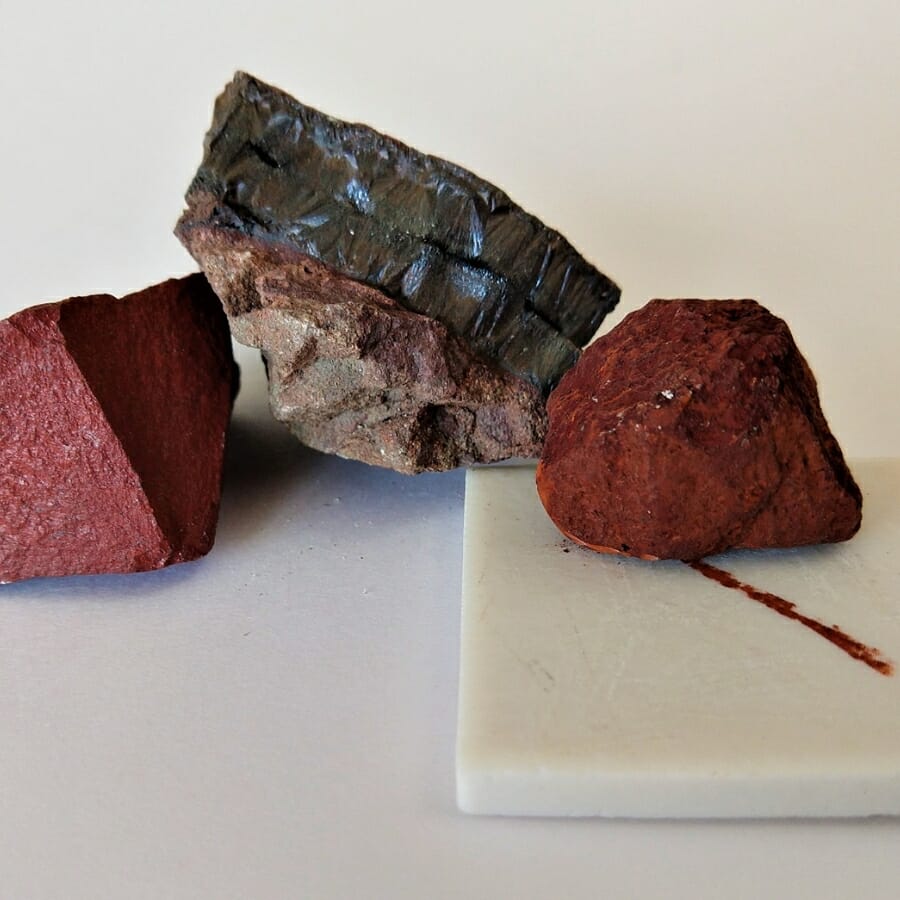
The streak test is a valuable method for identifying minerals based on the color of the powdered form of the mineral.
This test can provide crucial information that may differ from the mineral’s surface color and help distinguish between minerals that may appear similar in their natural state.
While the surface color of a mineral can vary due to impurities or weathering, the streak color is often a more reliable indicator of the mineral’s actual color. Minerals can have different colors in their powdered form than in solid form.
To perform a streak test, you’ll need a streak plate—a piece of unglazed porcelain—on which you rub the mineral sample. The streak plate’s rough surface allows the mineral to be powdered, revealing its streak color.
The streak test is beneficial when dealing with minerals with variable or masked colors due to impurities or weathering.
By observing the streak color, you can gain insight into the mineral’s composition and make a more accurate identification.
Take note of their crystal shape
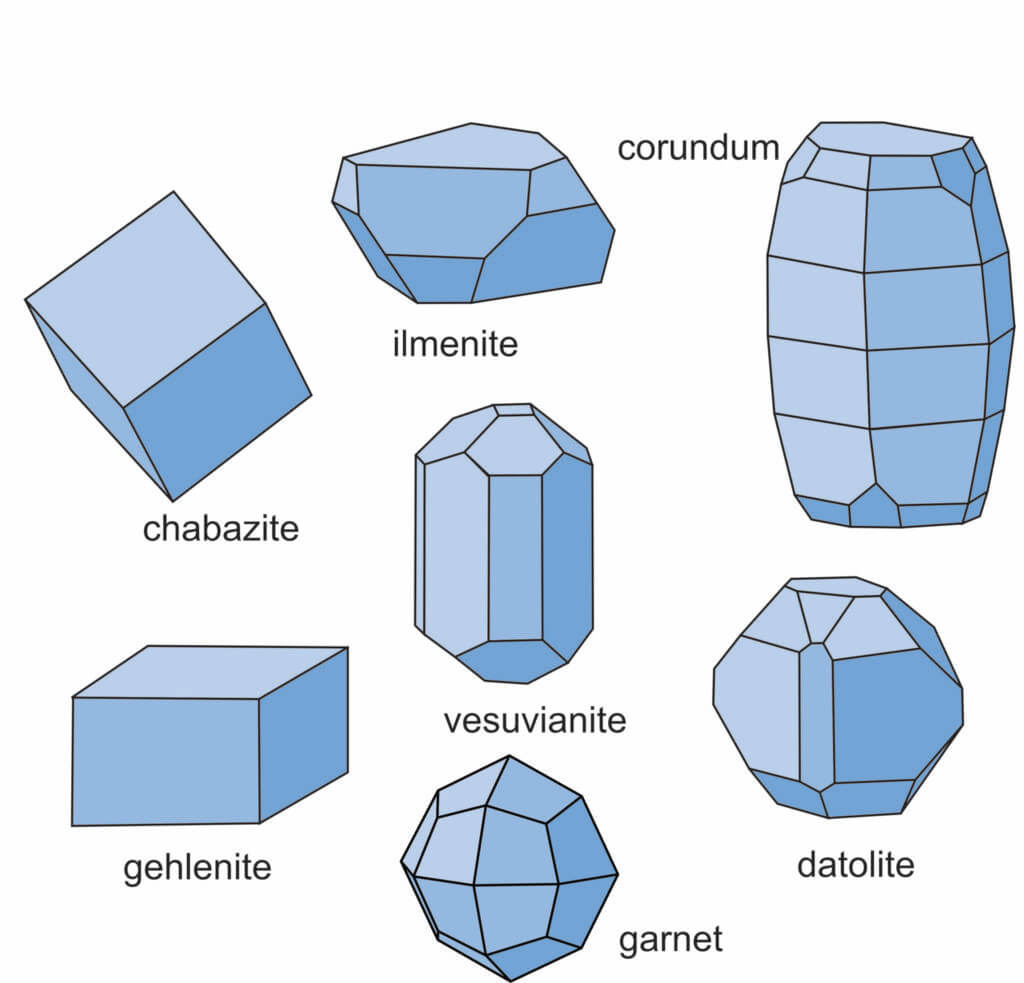
Identifying a crystal’s shape involves observing its external geometric characteristics. Crystals are classified into various crystal systems based on their symmetry and angles between crystal faces.
Examine the crystal as a whole to identify its general shape. Crystals can be prismatic (long and slender), tabular (flattened with broad faces), cubic (with equal sides), hexagonal (with six sides), and more.
Count the number of sides or faces on the crystal. Crystals typically have distinct faces that meet at specific angles. The number of sides can help determine the crystal’s symmetry and system.
Observe the angles between the crystal’s faces. Different crystal systems have characteristic angles. Use a protractor or a reference guide to measure these angles accurately.
Crystals are categorized into seven crystal systems: cubic, tetragonal, orthorhombic, rhombohedral, hexagonal, monoclinic, and triclinic. Each system has specific characteristics in terms of symmetry and angles between faces.
Identifying crystal shapes may require some familiarity with crystallography terminology and principles.
Learning about crystal systems and their corresponding properties can significantly enhance your ability to accurately identify crystals based on their shapes.
Do a hardness test
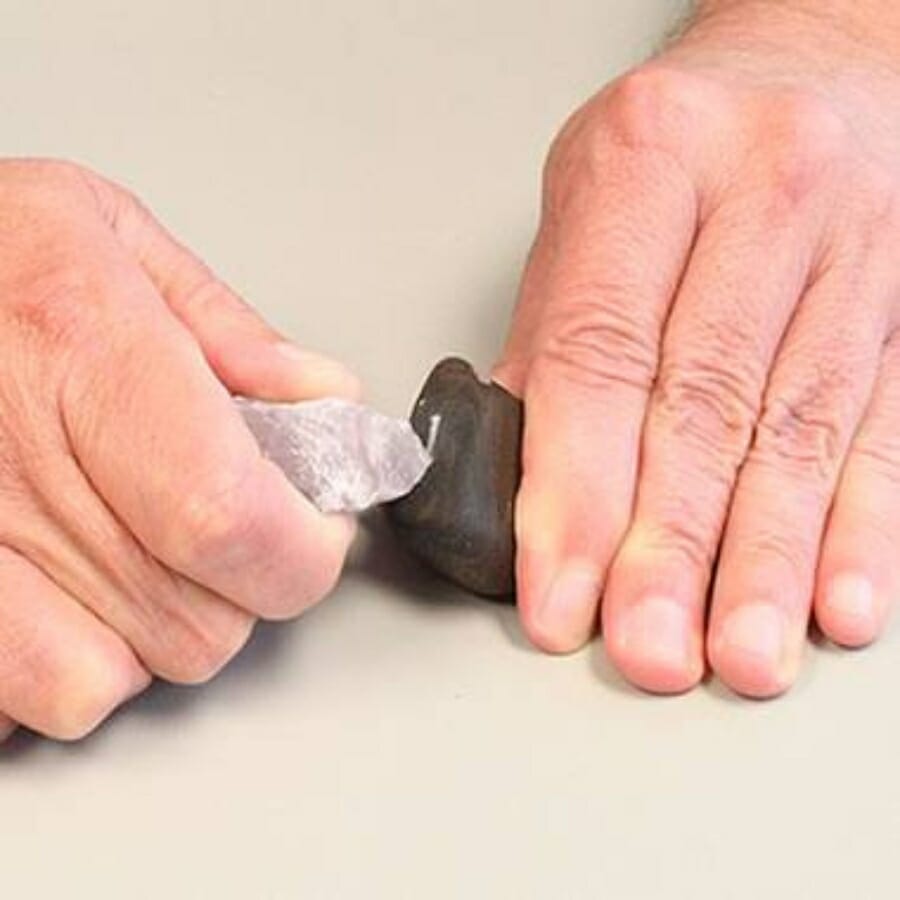
Conducting a hardness test on minerals involves determining their relative resistance to scratching.
The Mohs hardness scale is a widely used method for this purpose. It ranks minerals from 1 (softest) to 10 (hardest) based on their ability to scratch or be scratched by other minerals.
Choose minerals with known hardness levels to use as reference points. Hold the mineral you want to test firmly in one hand. You can test the mineral’s hardness against a testing mineral by scratching its surface.
The Mohs hardness test provides a quick and simple way to determine the relative hardness of minerals.
However, it’s important to note that this method only gives a rough estimate of hardness and is not always precise, especially for minerals with similar hardness levels.

